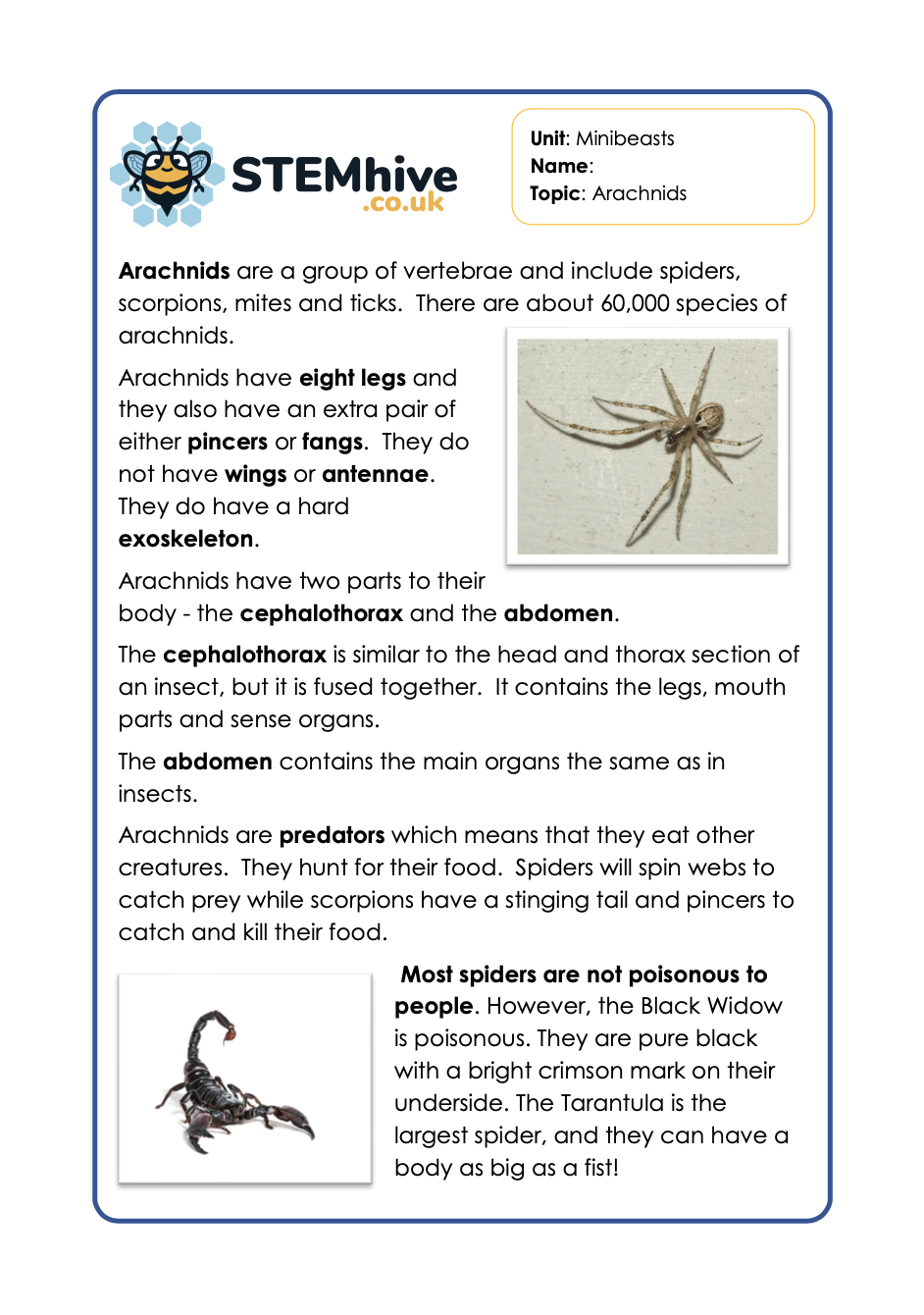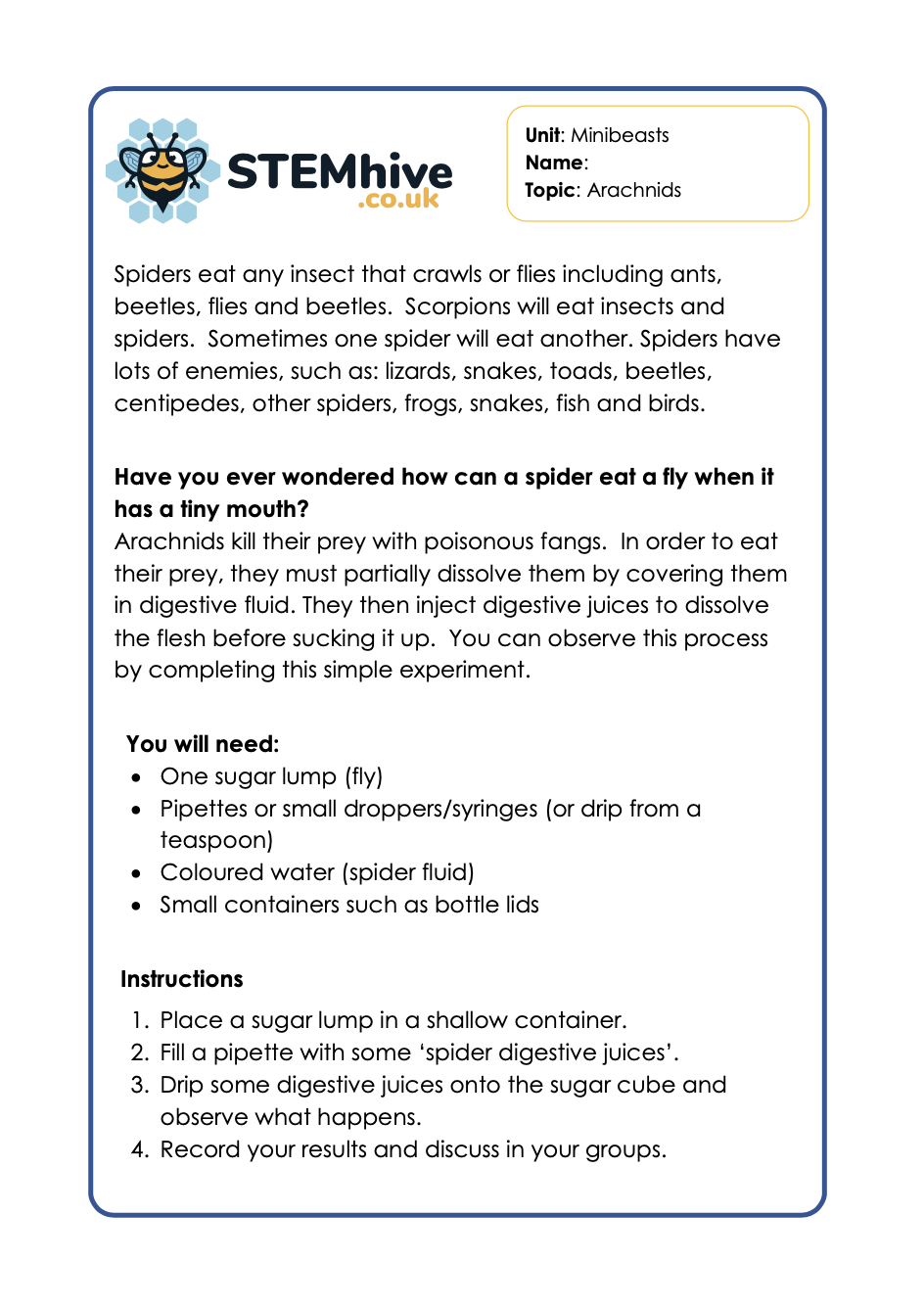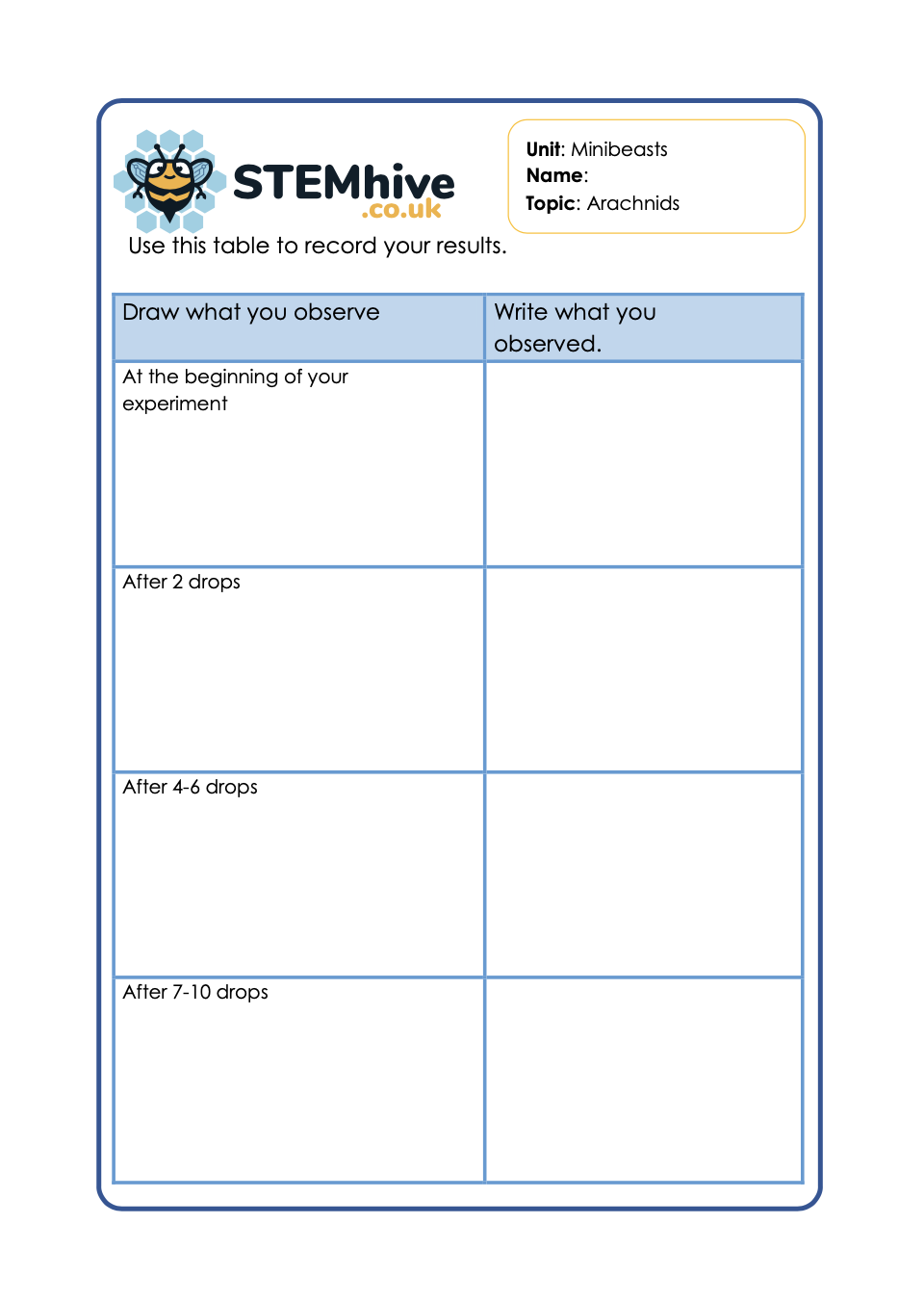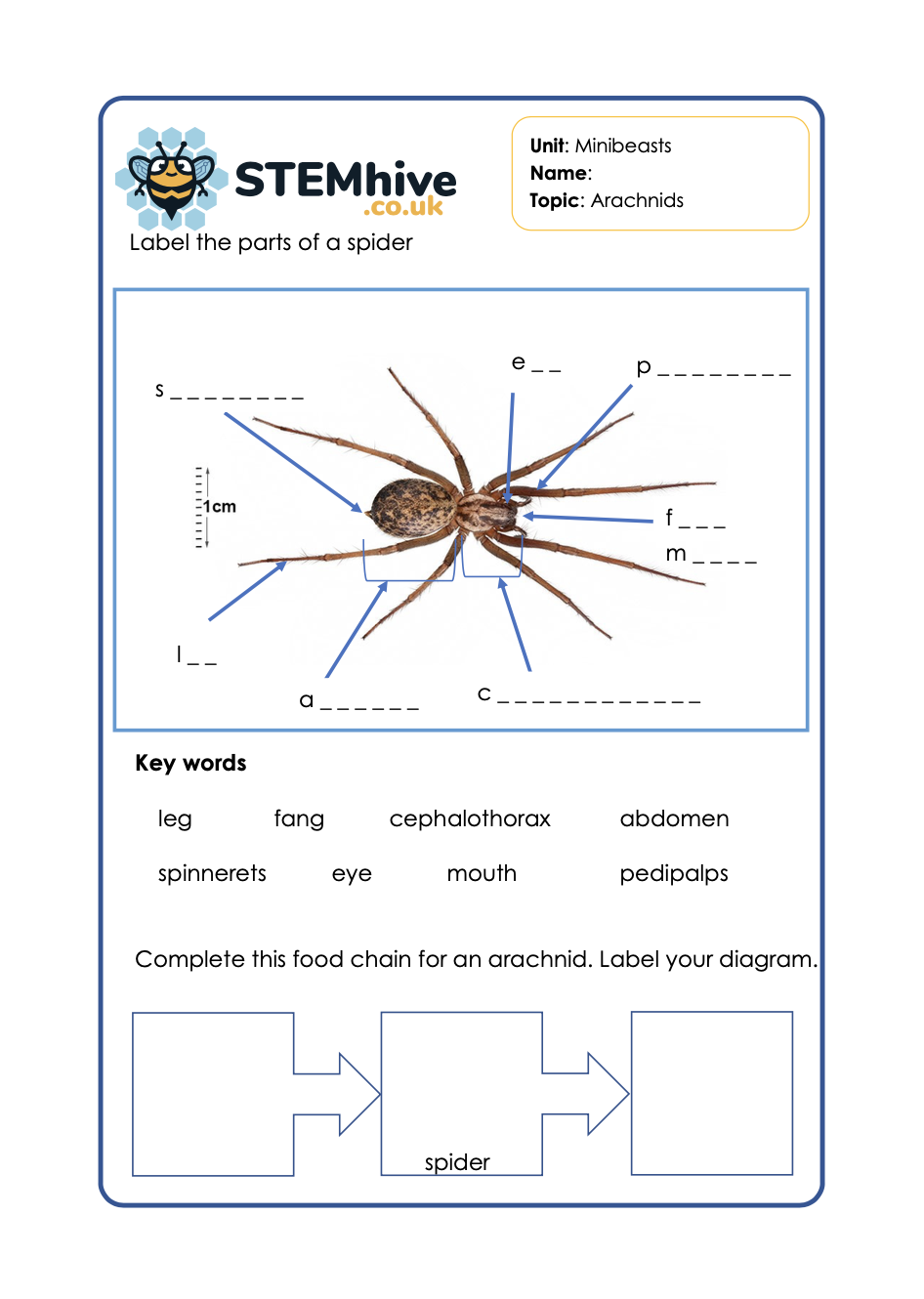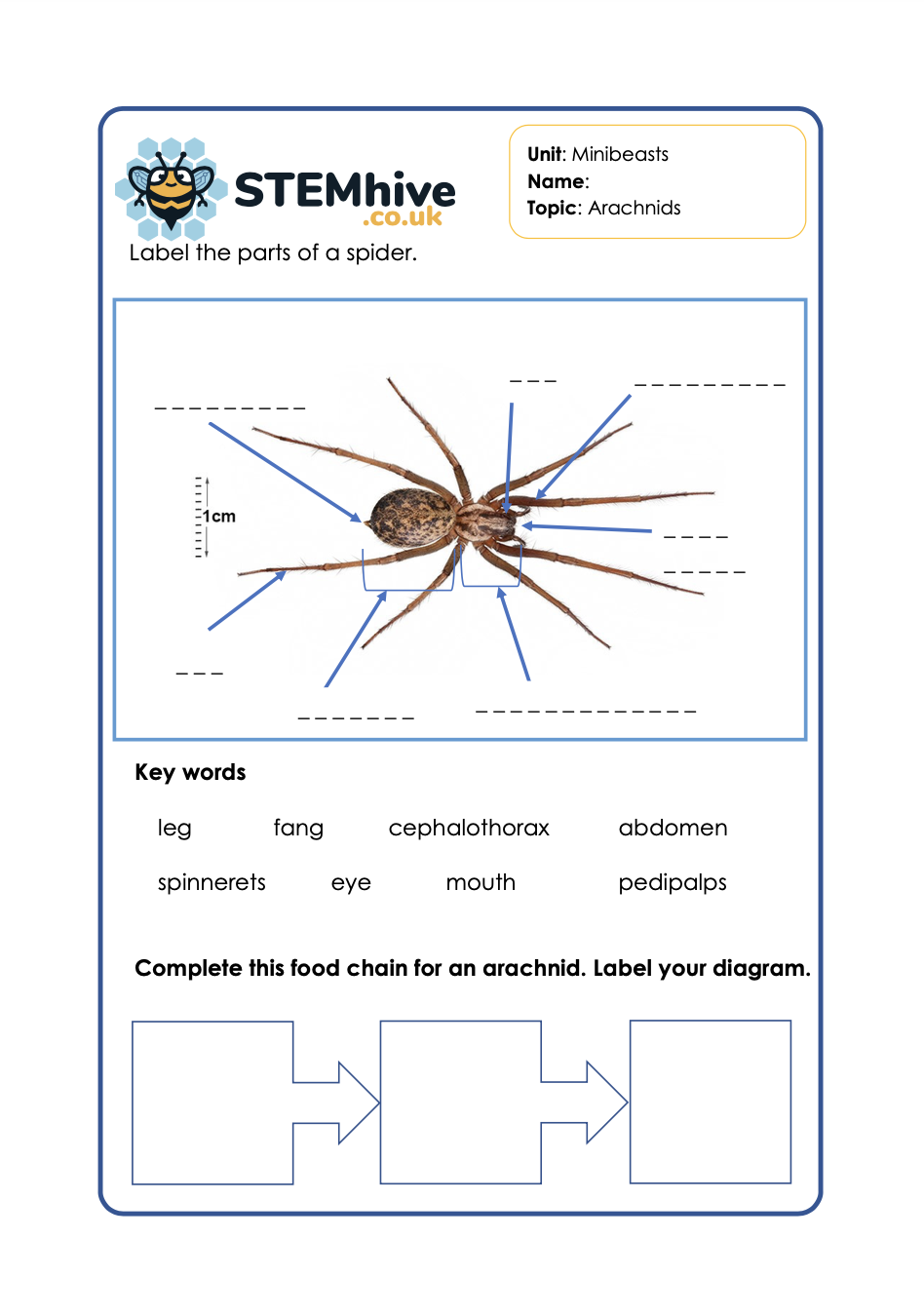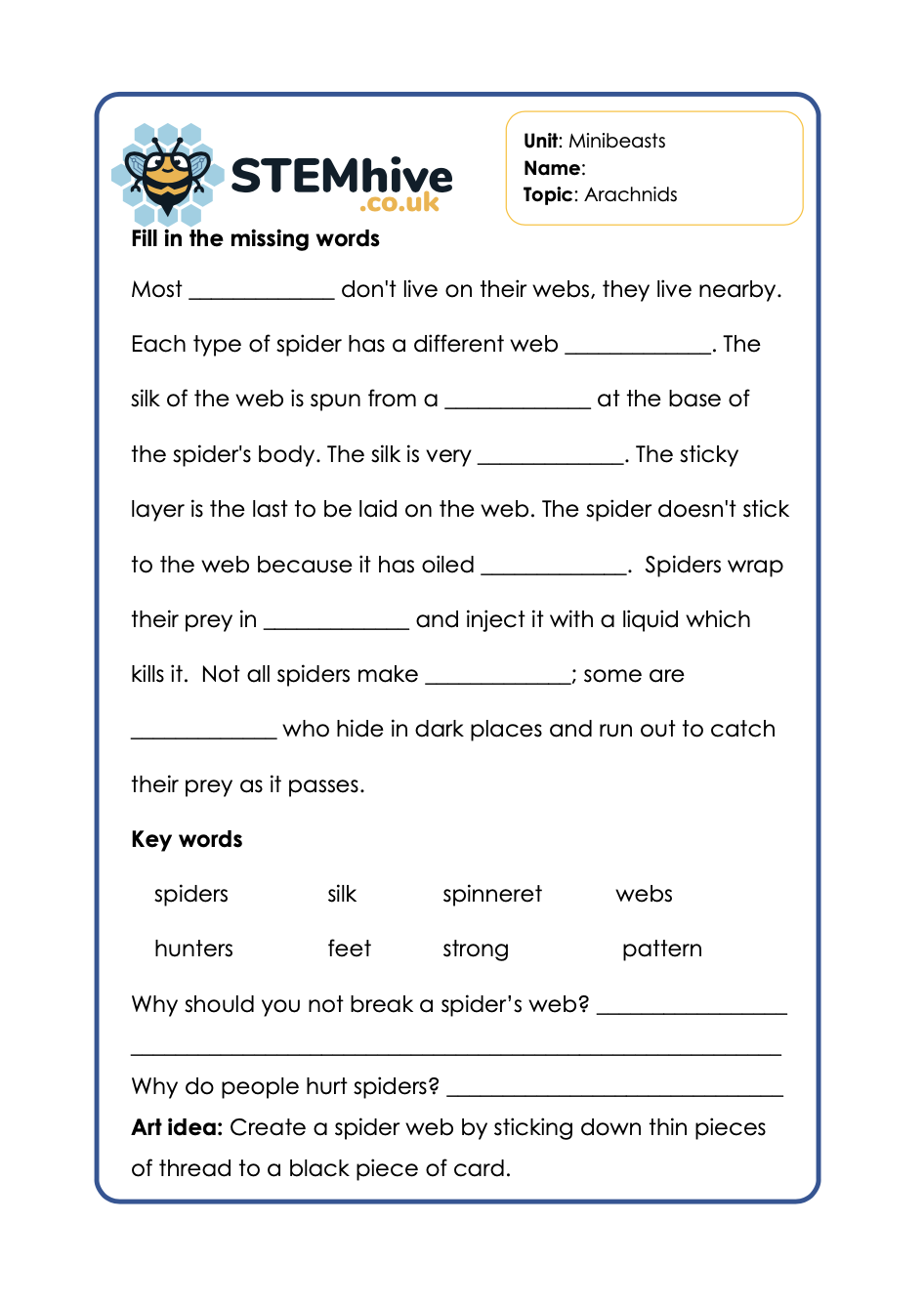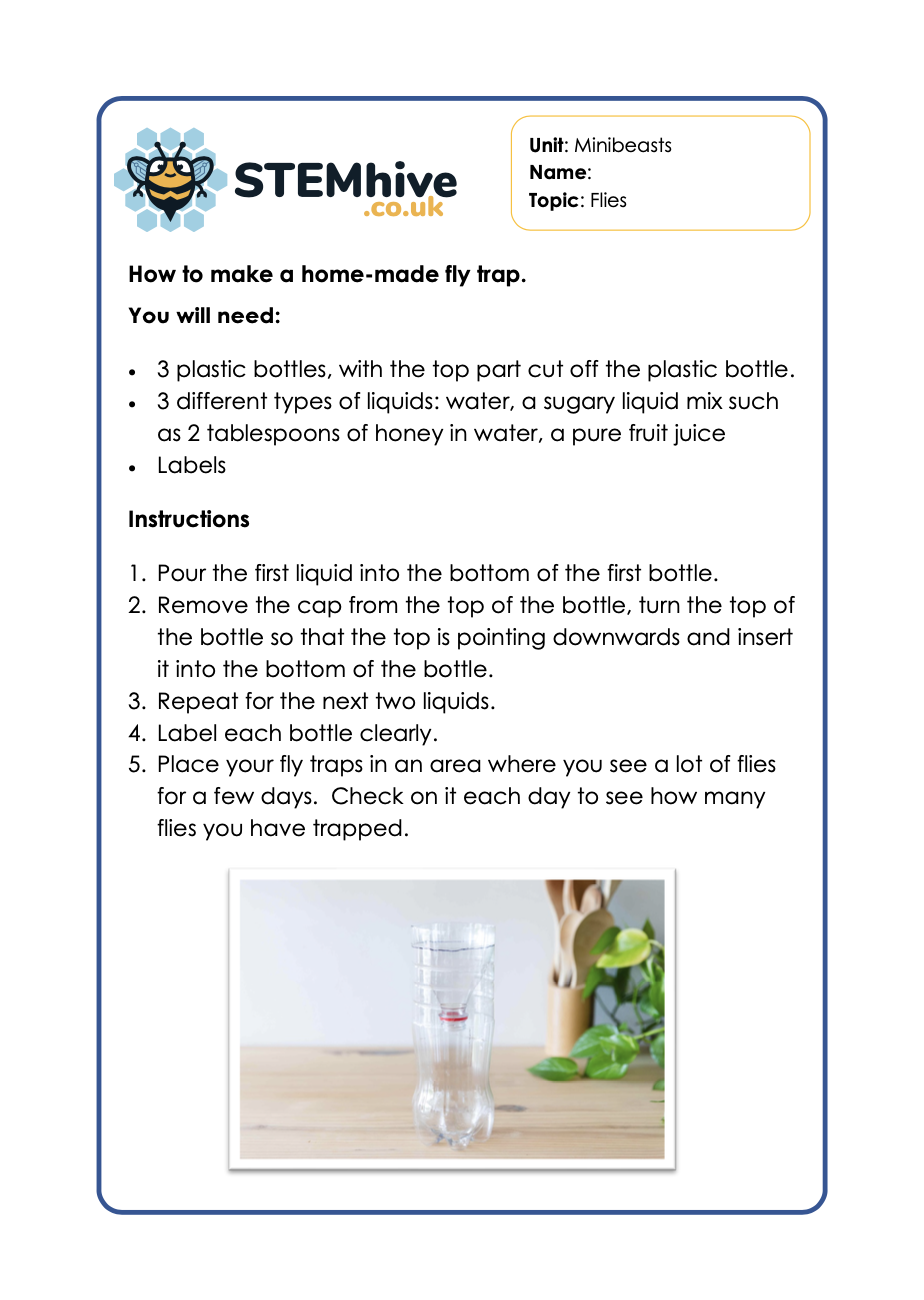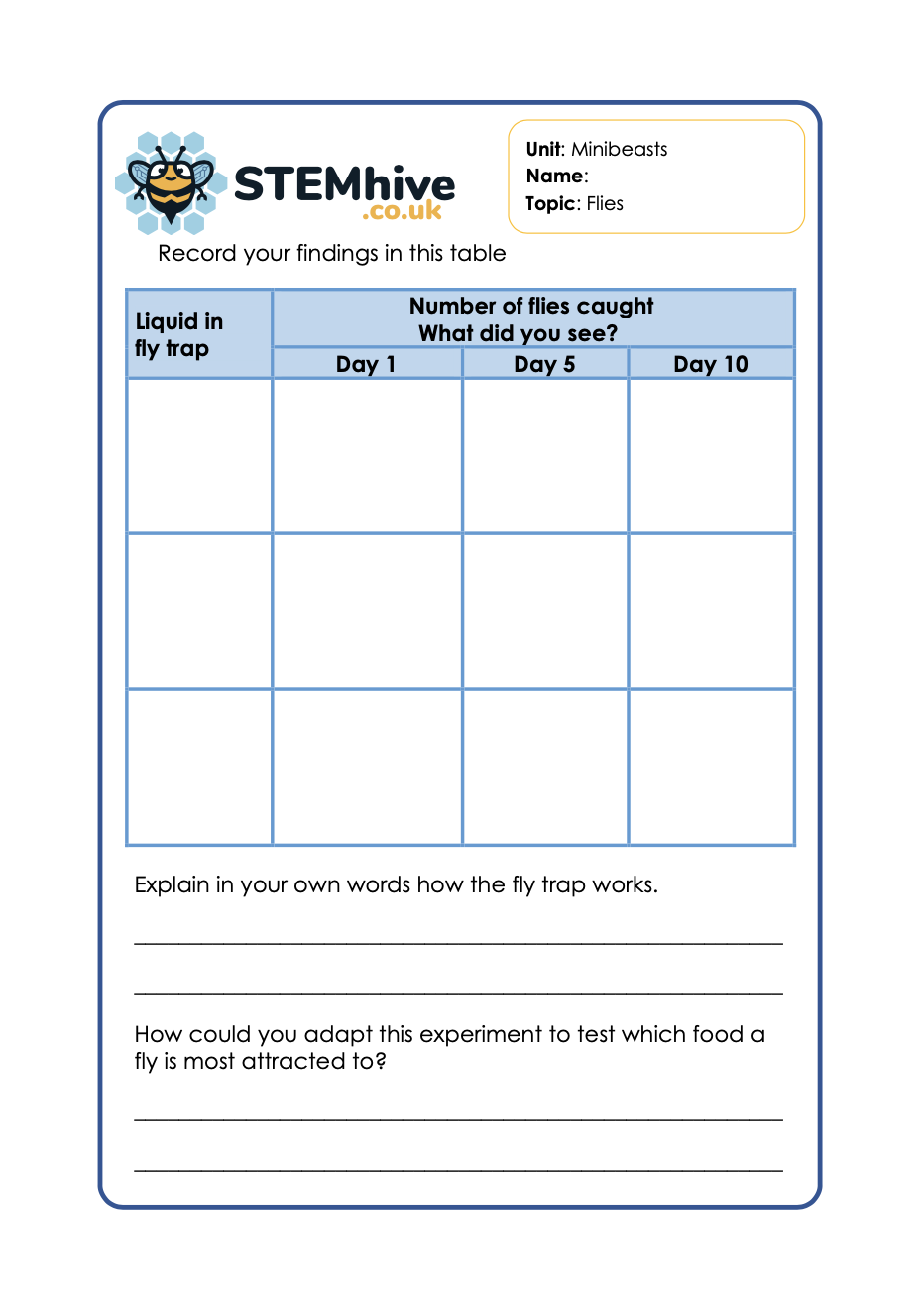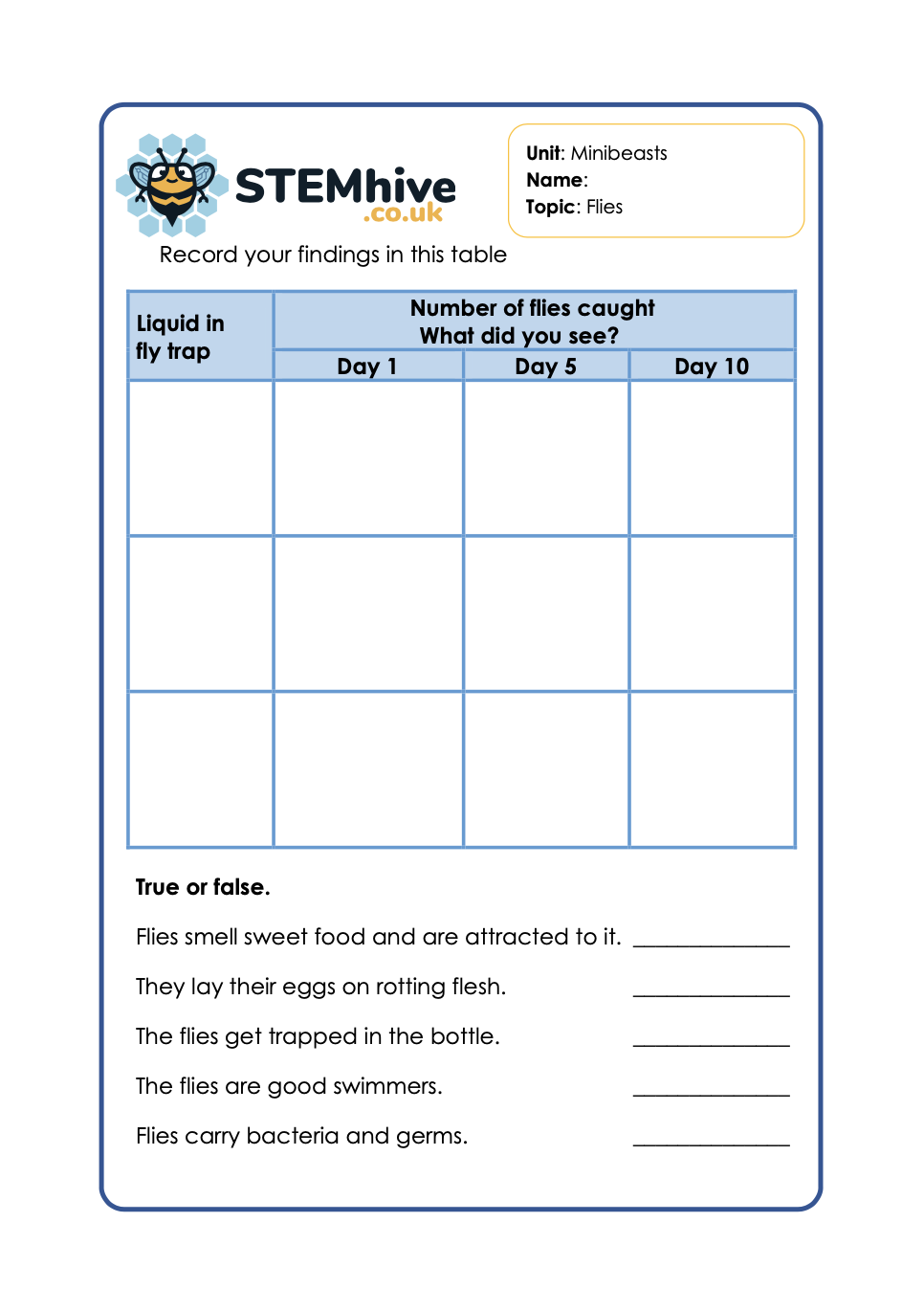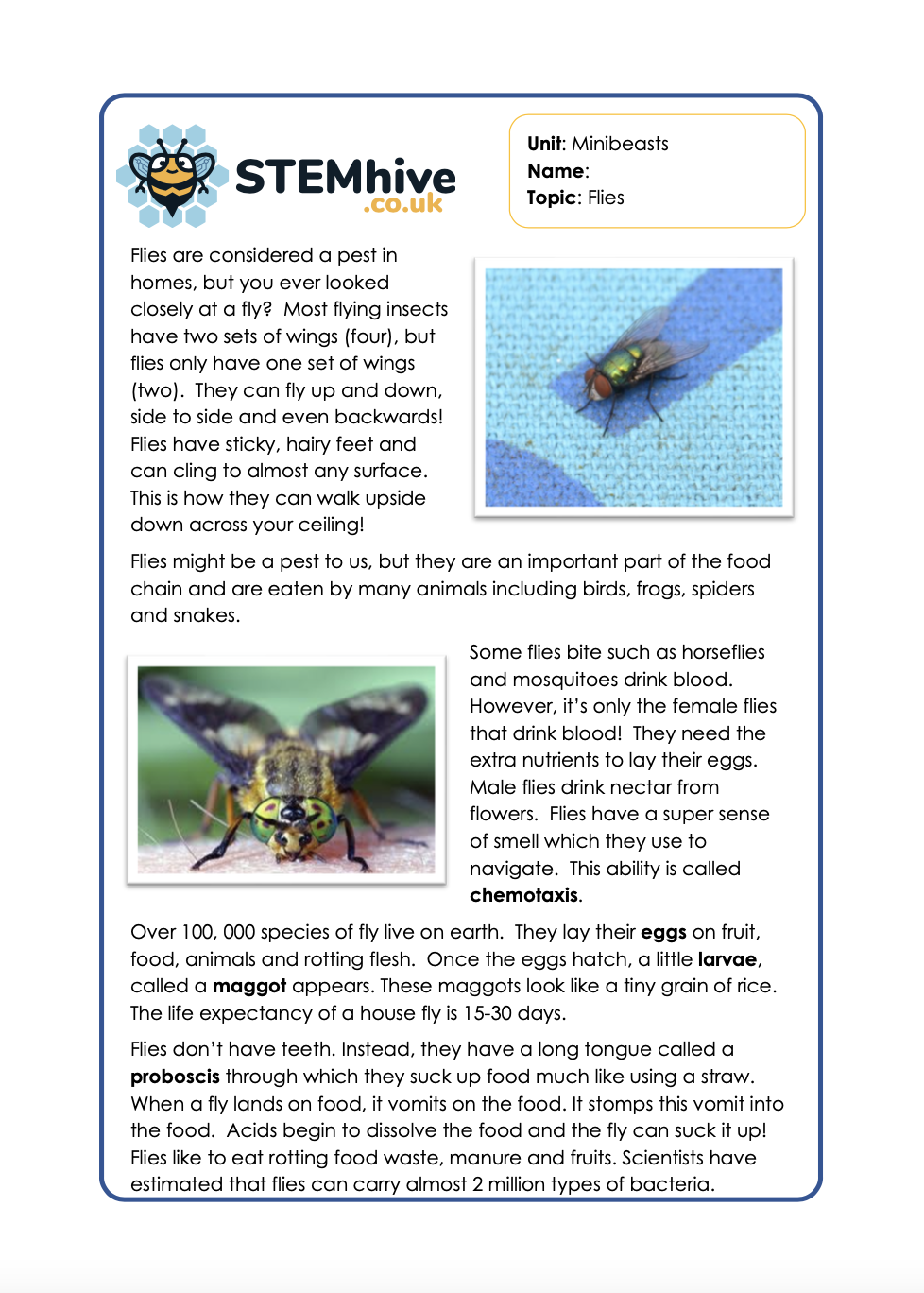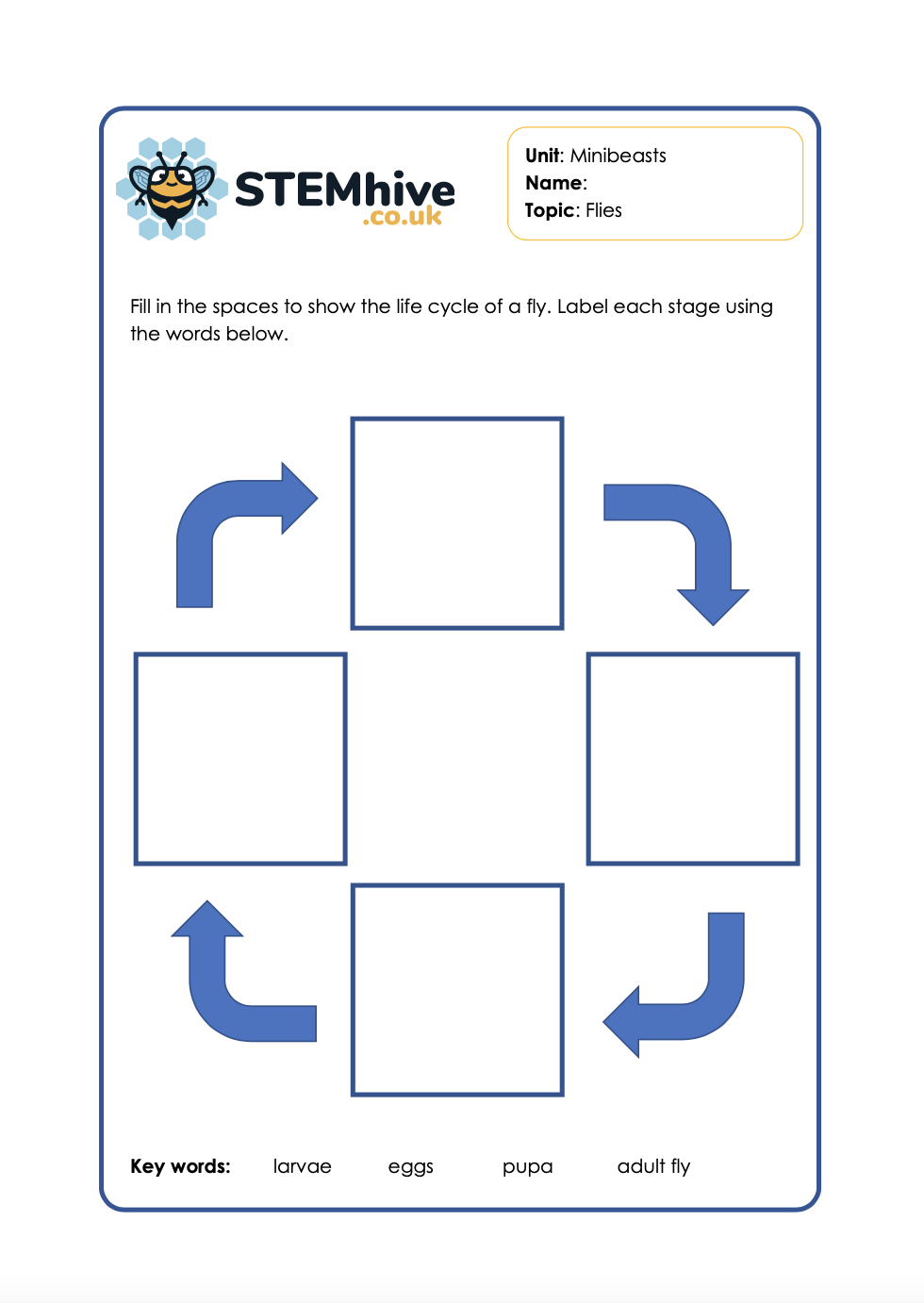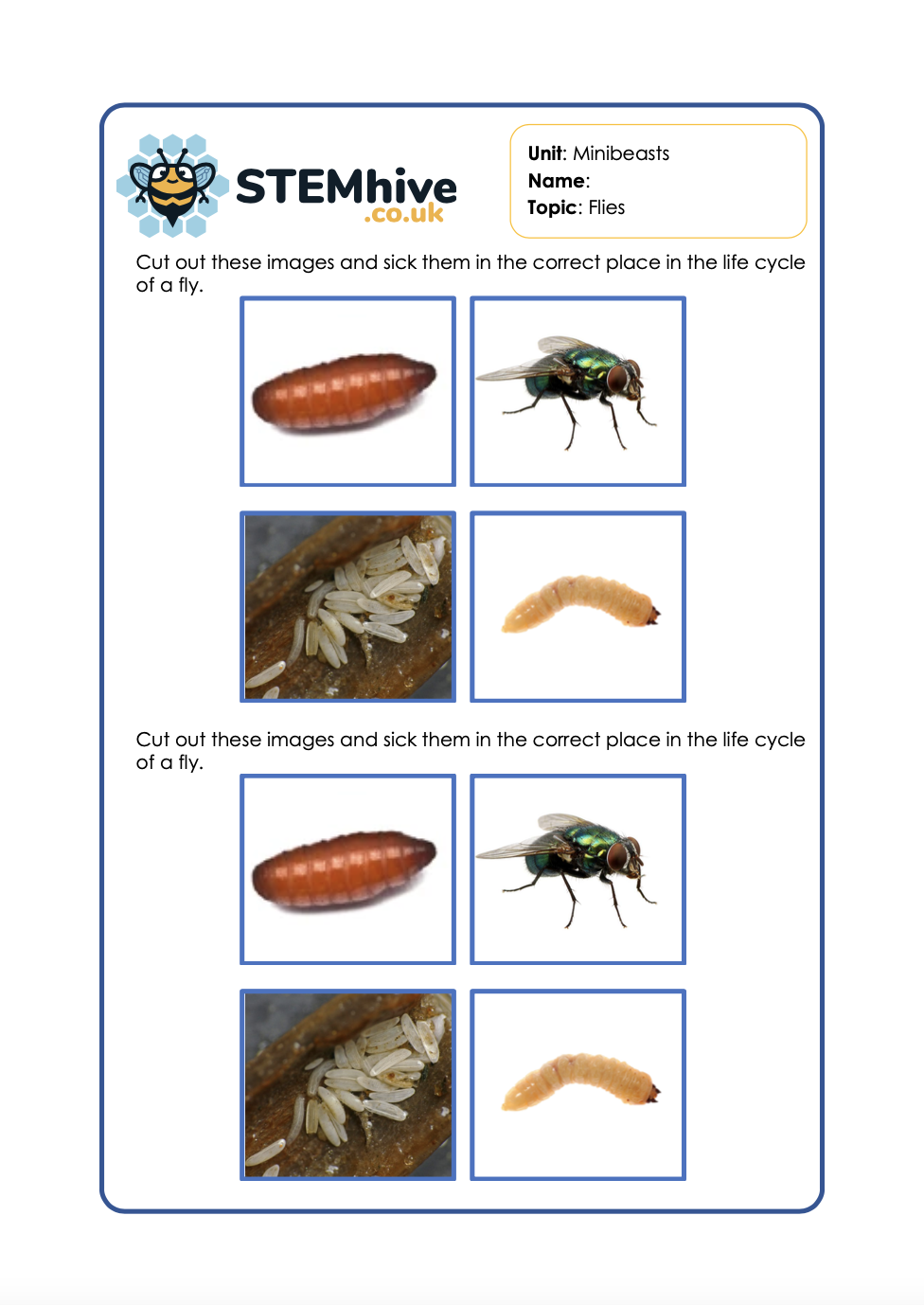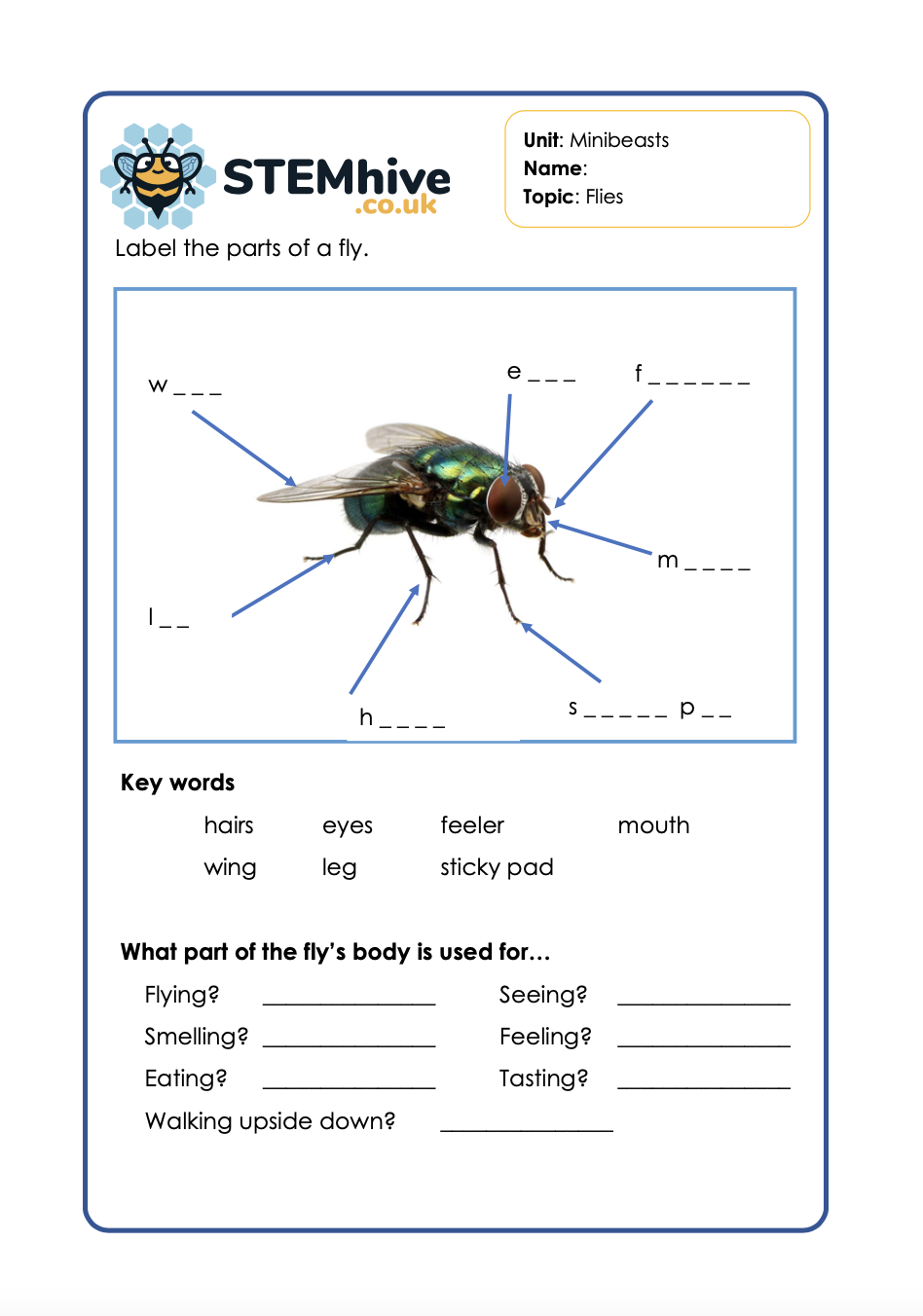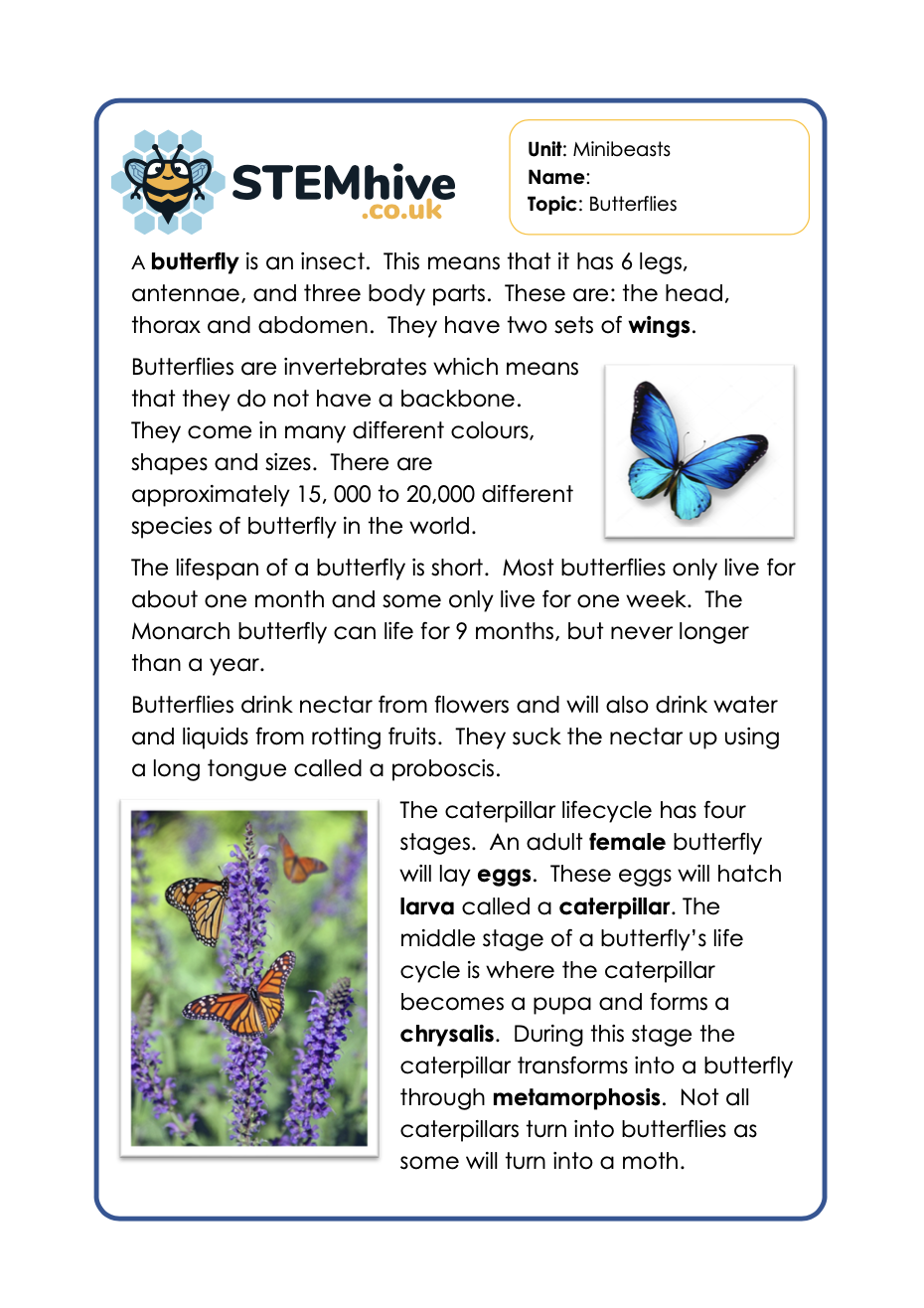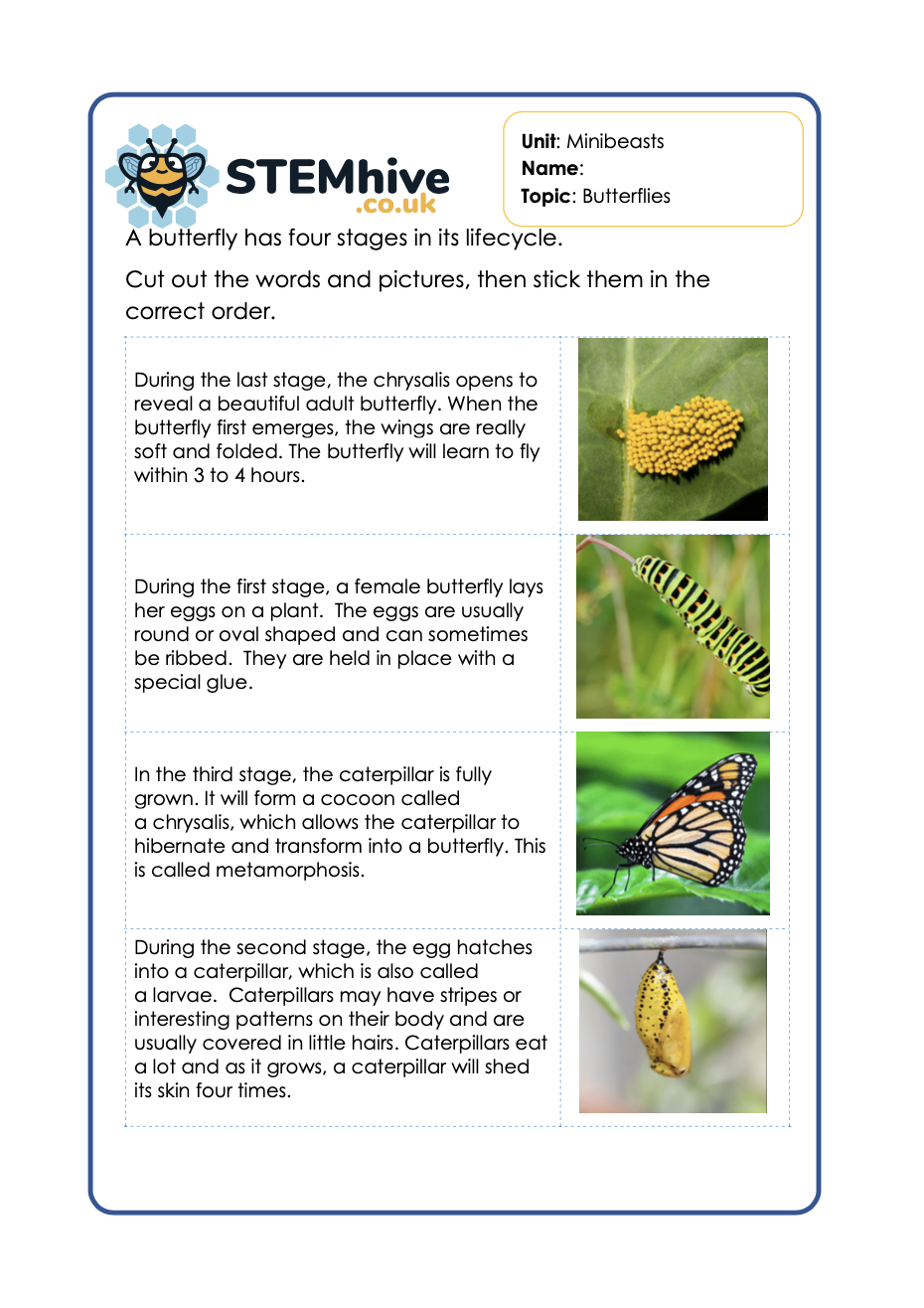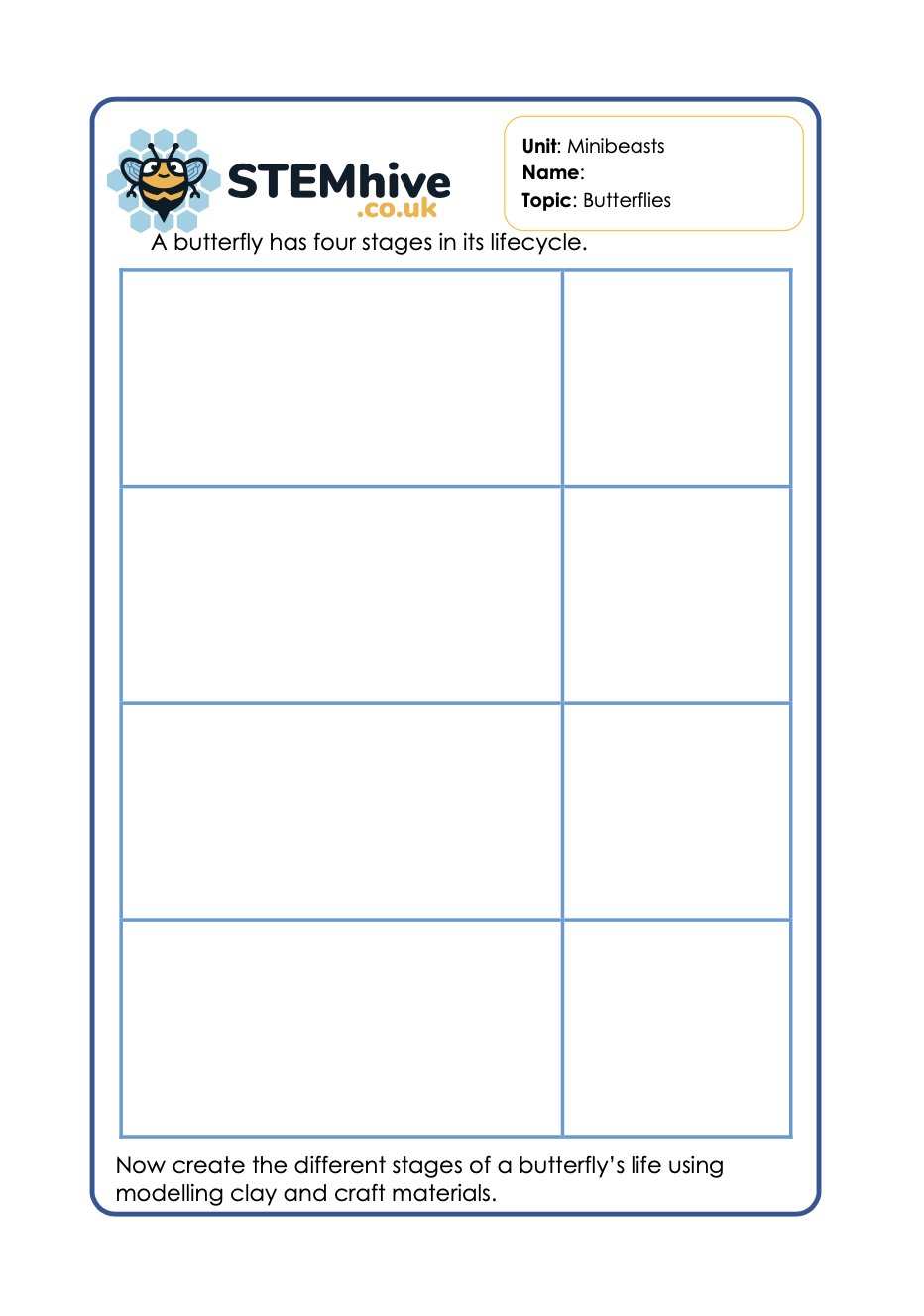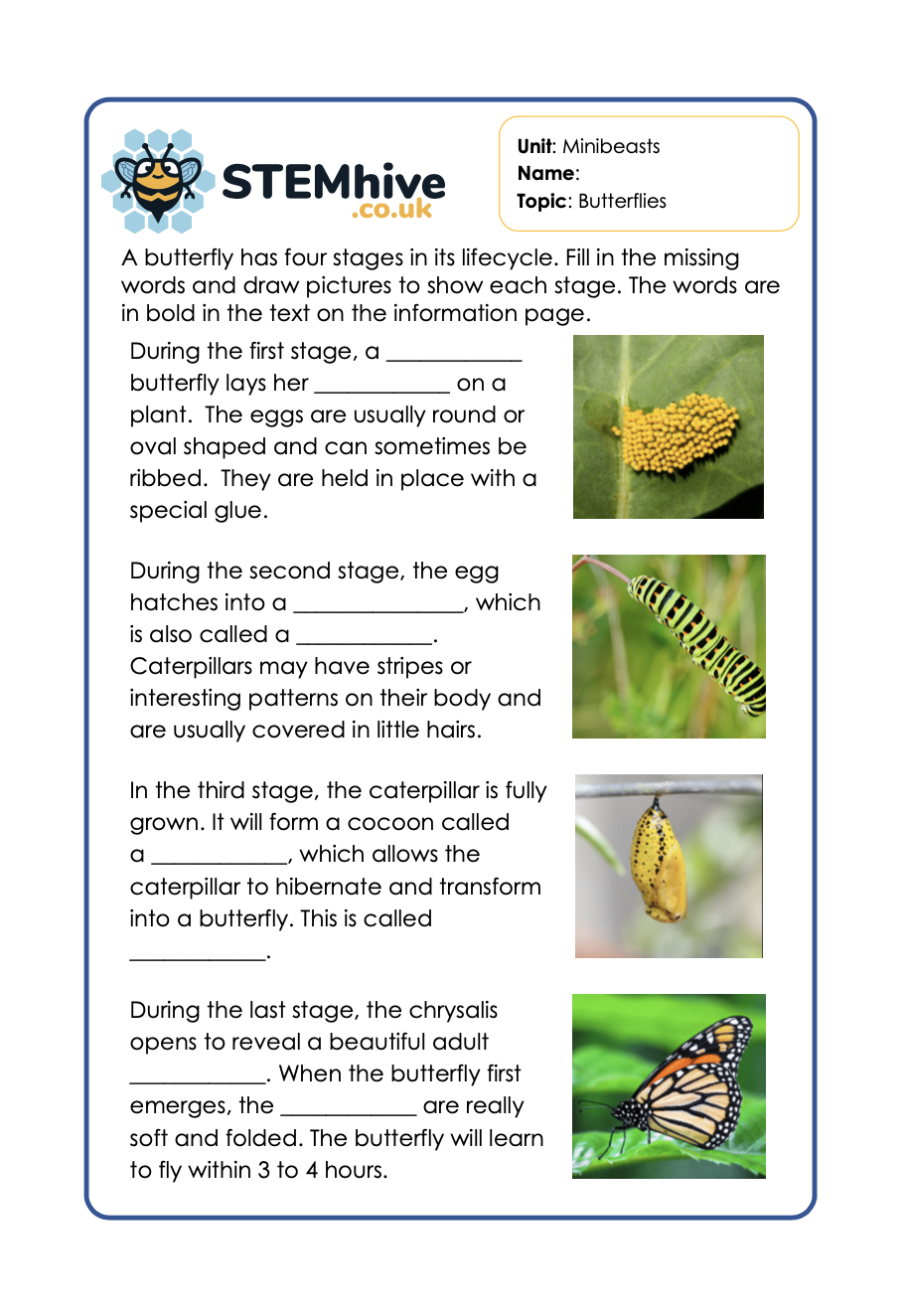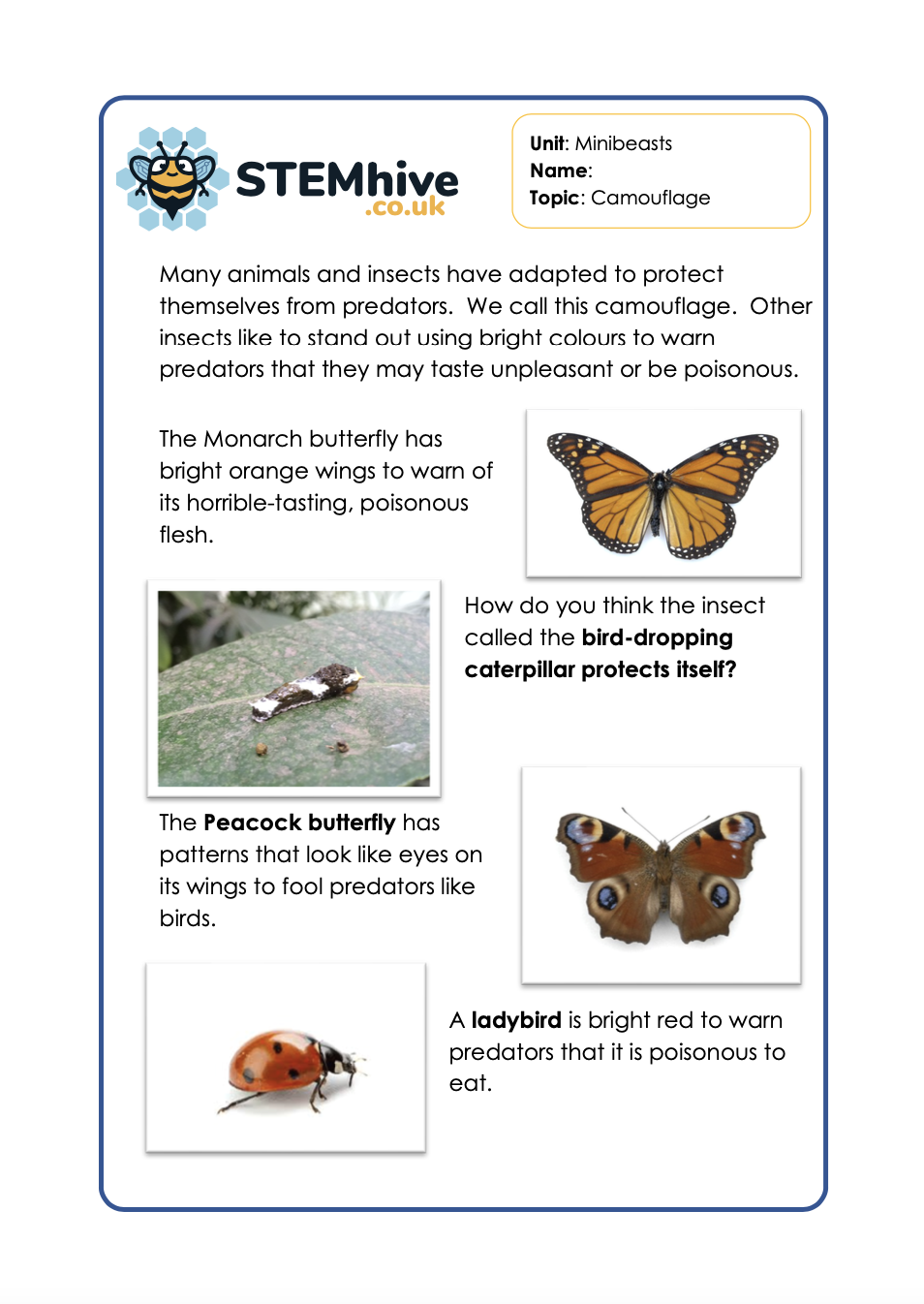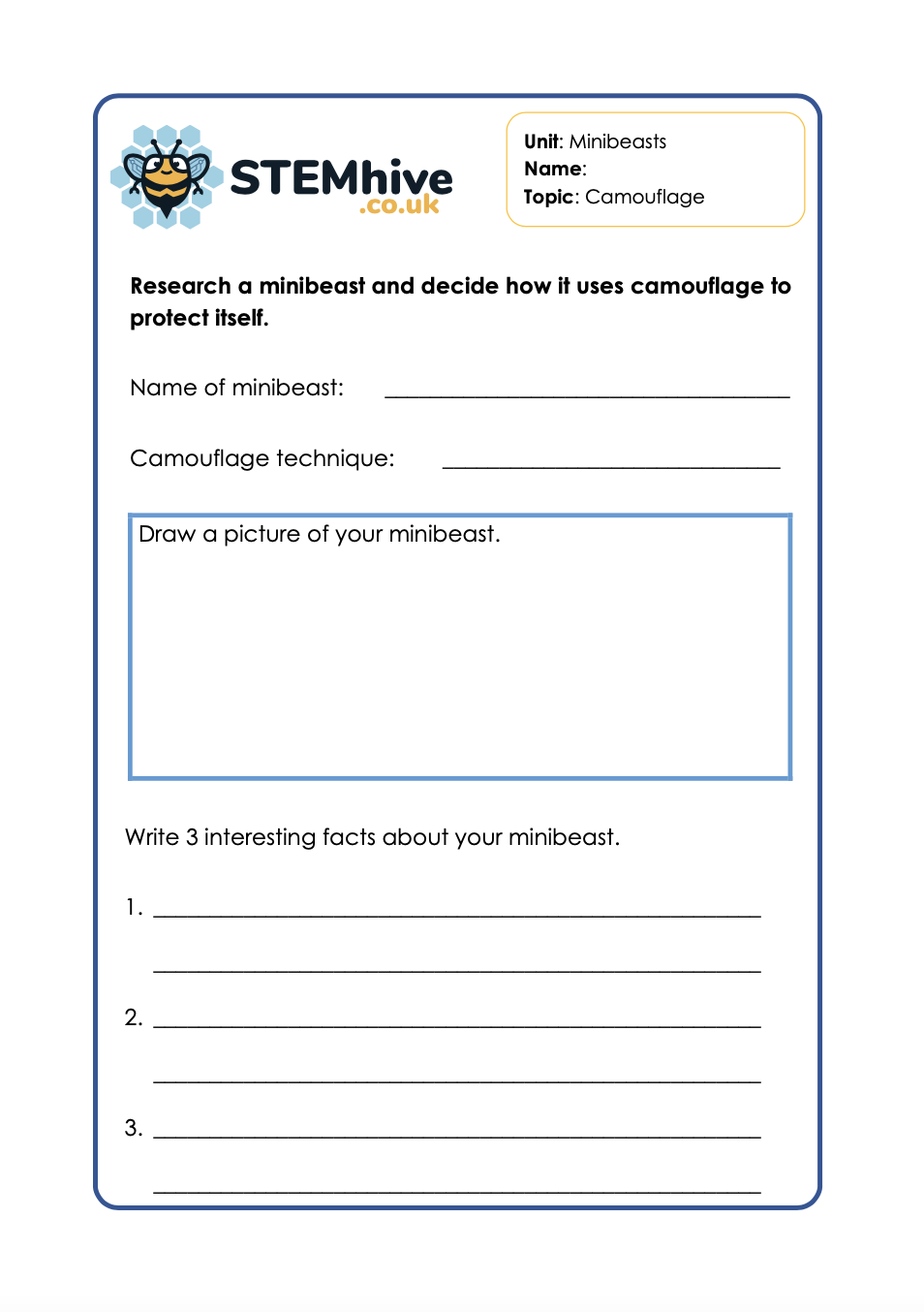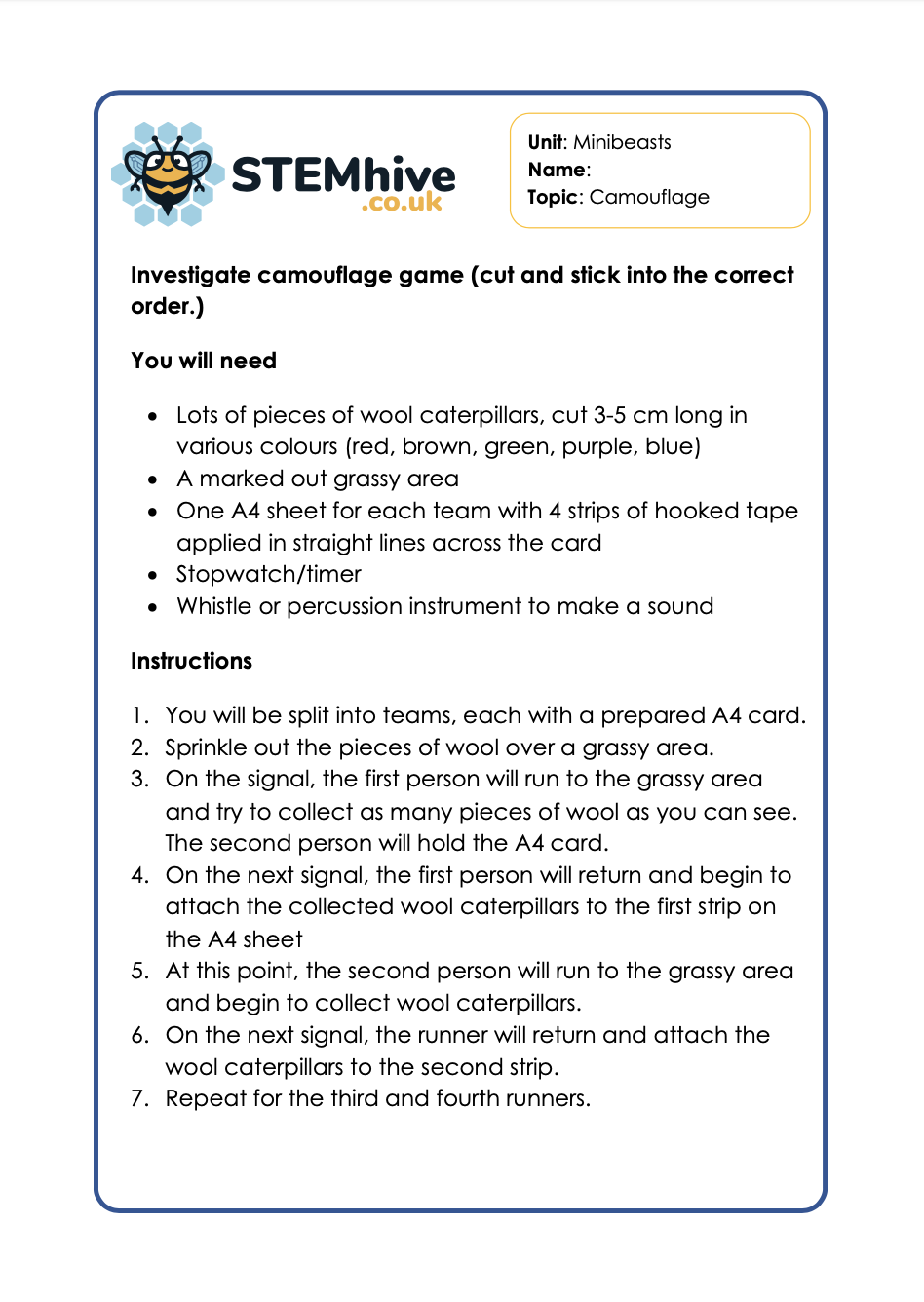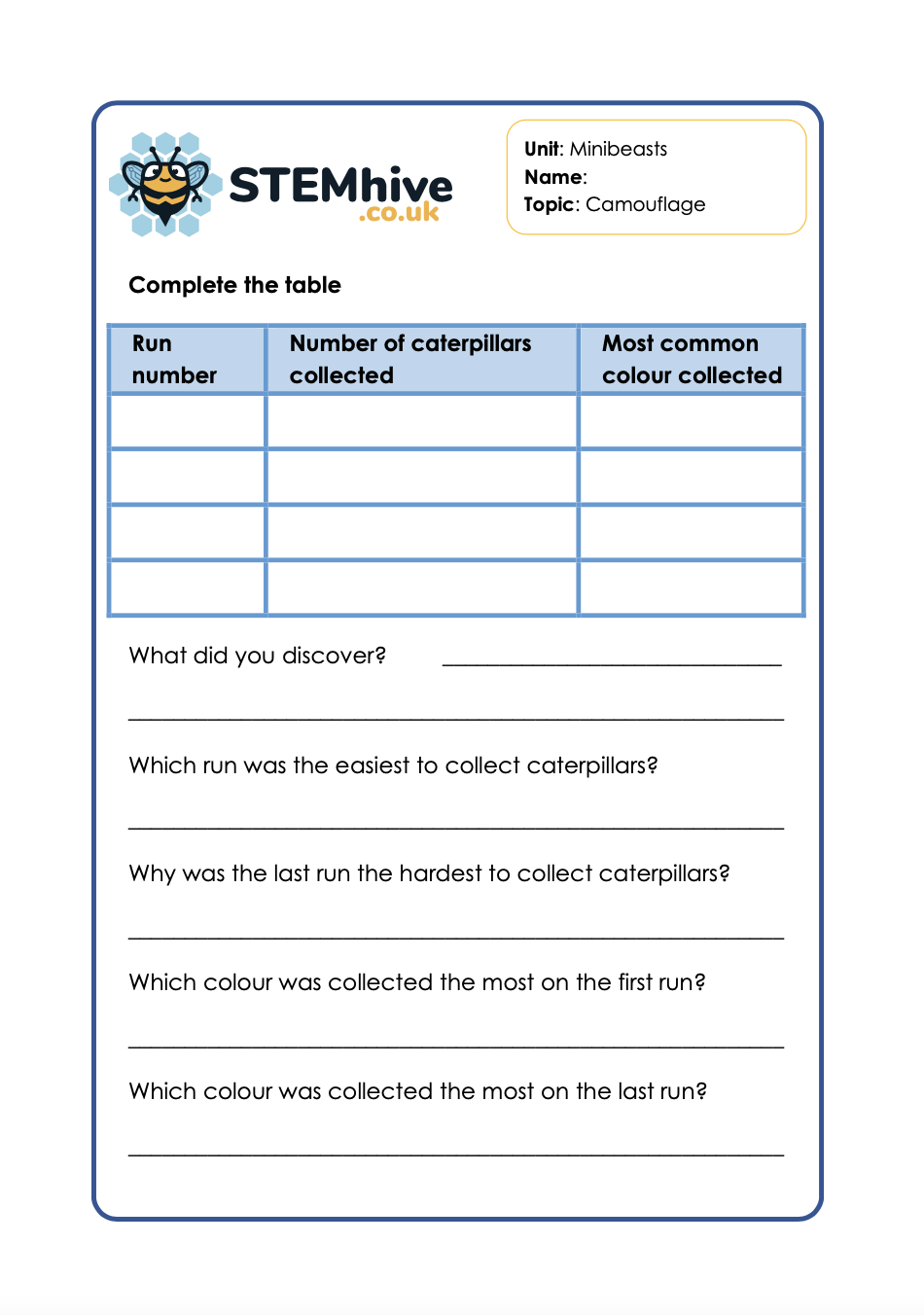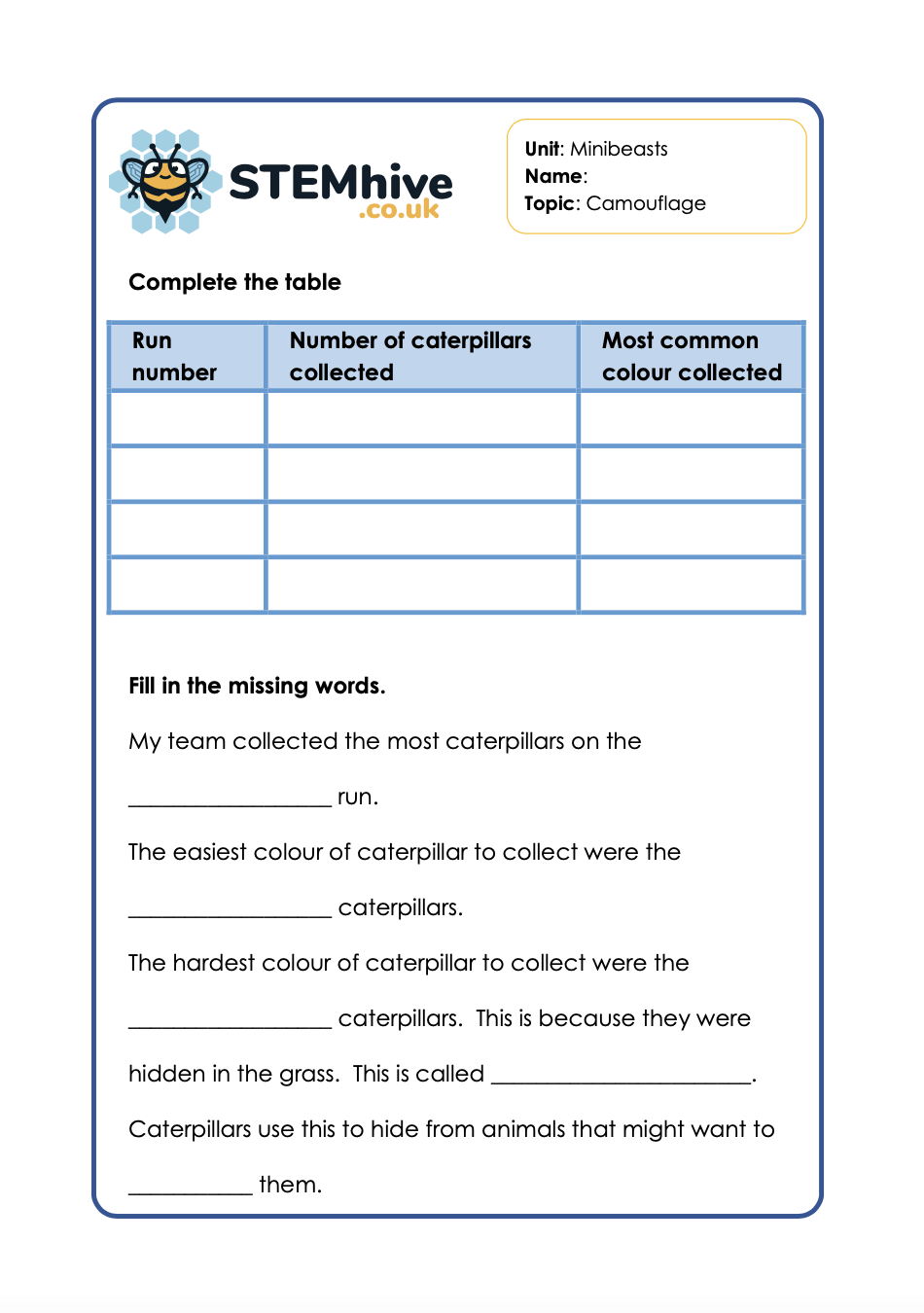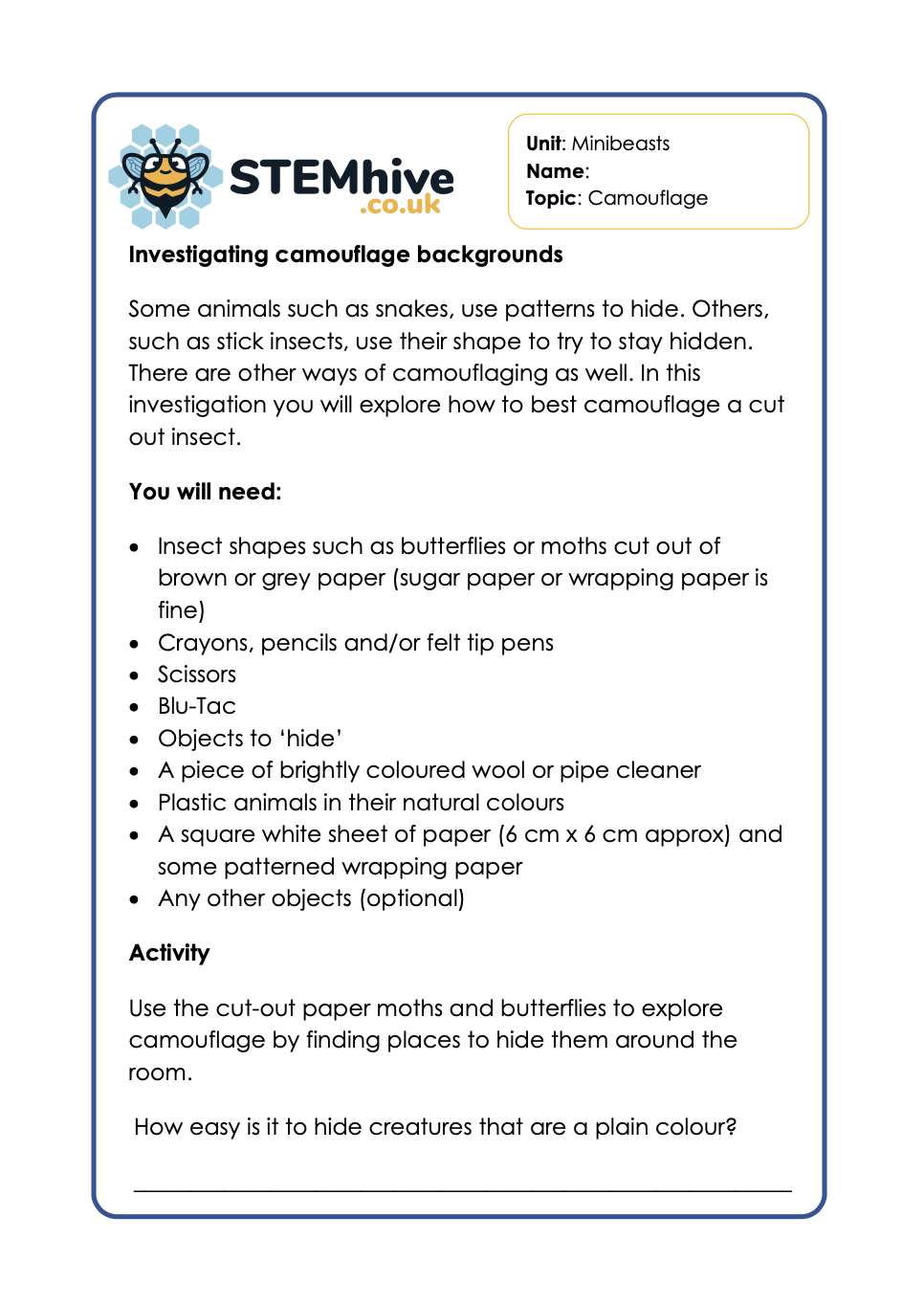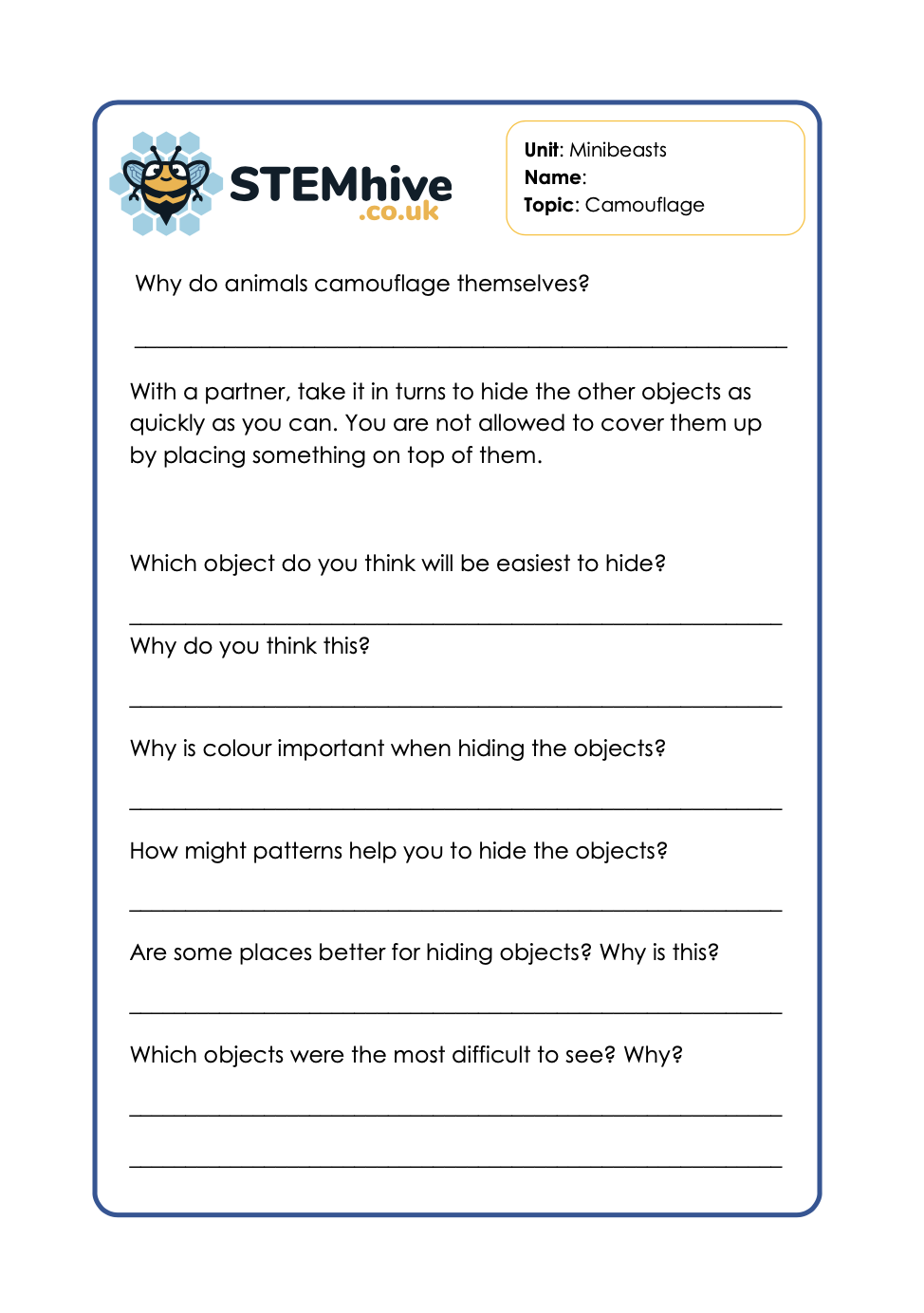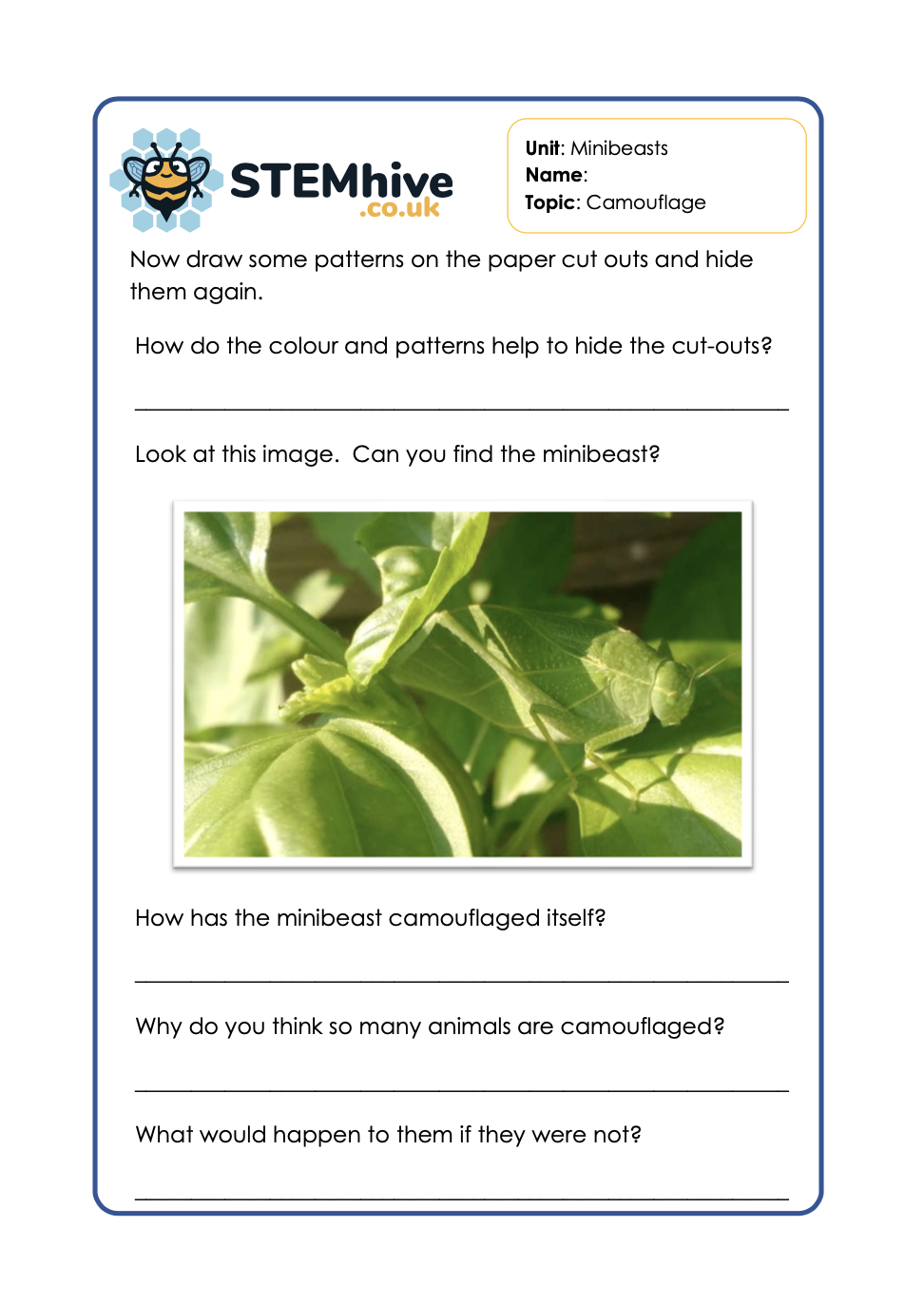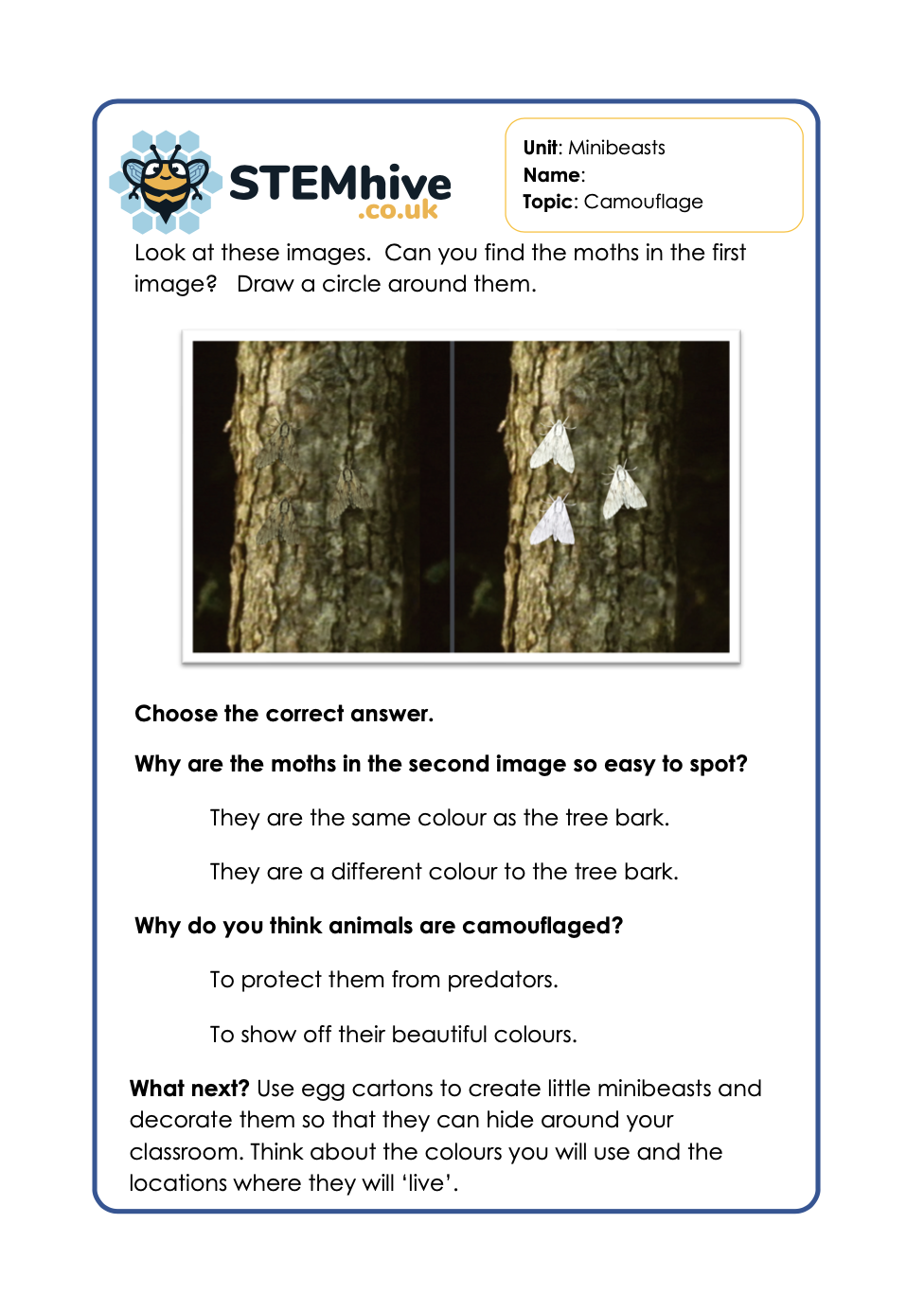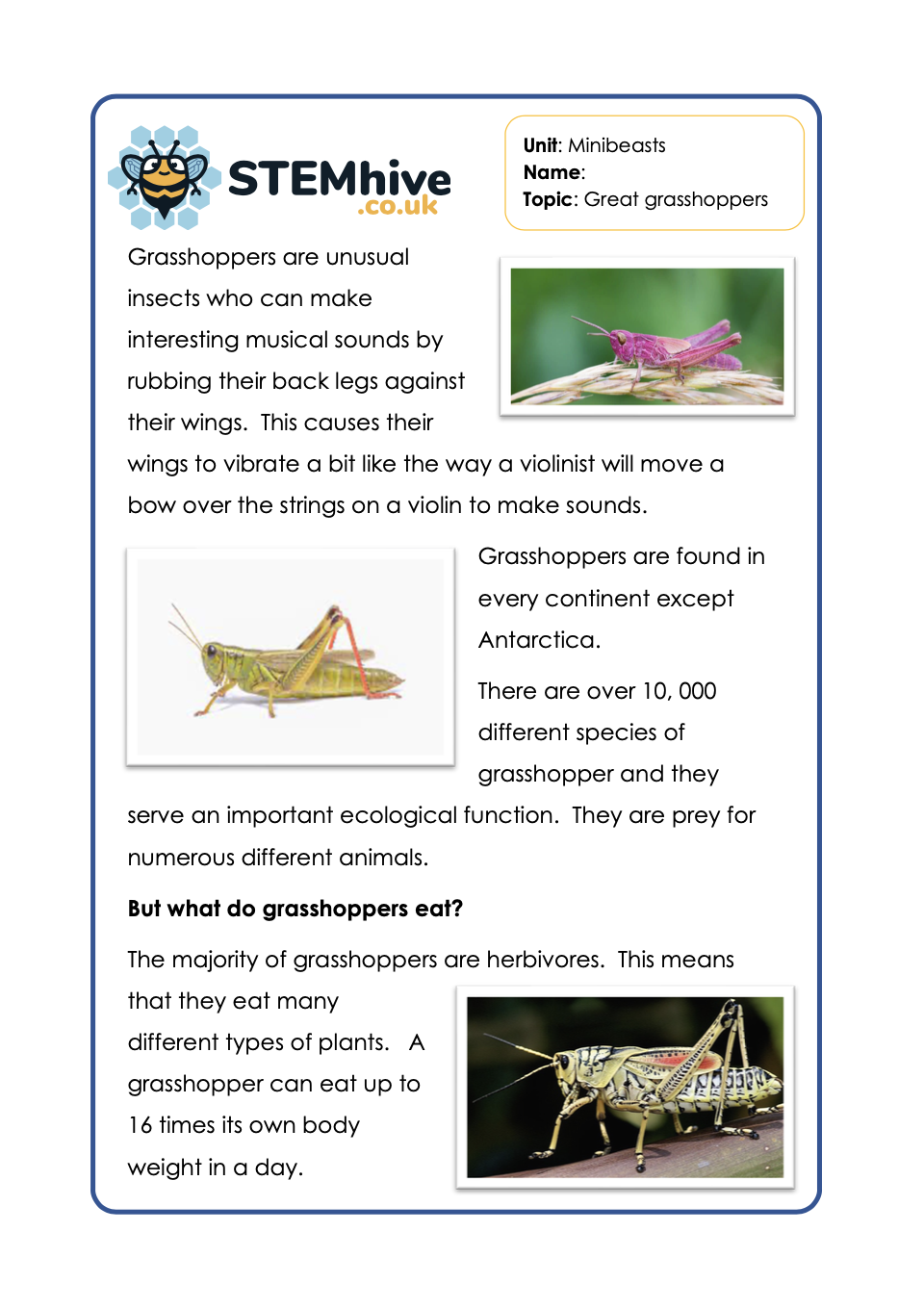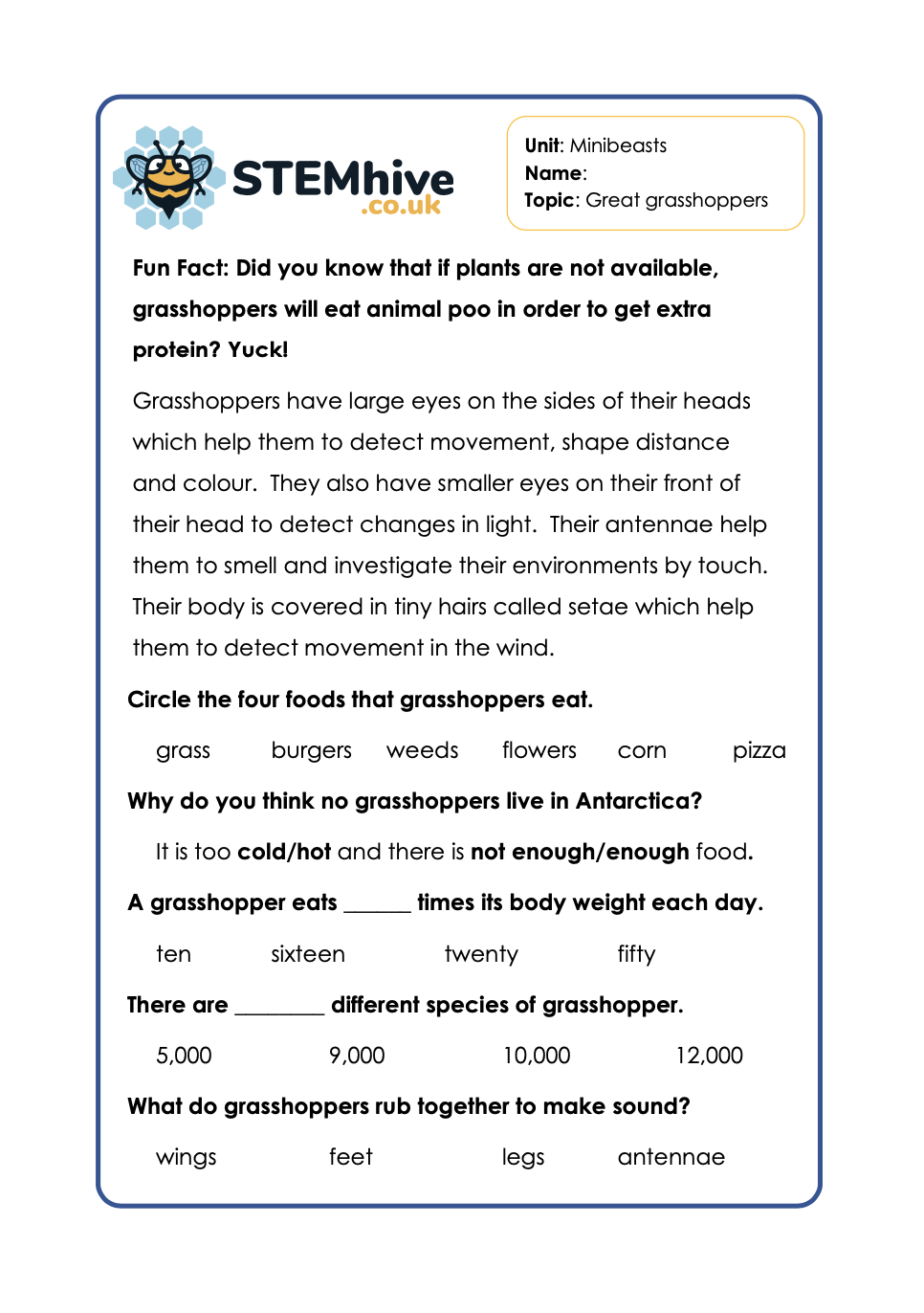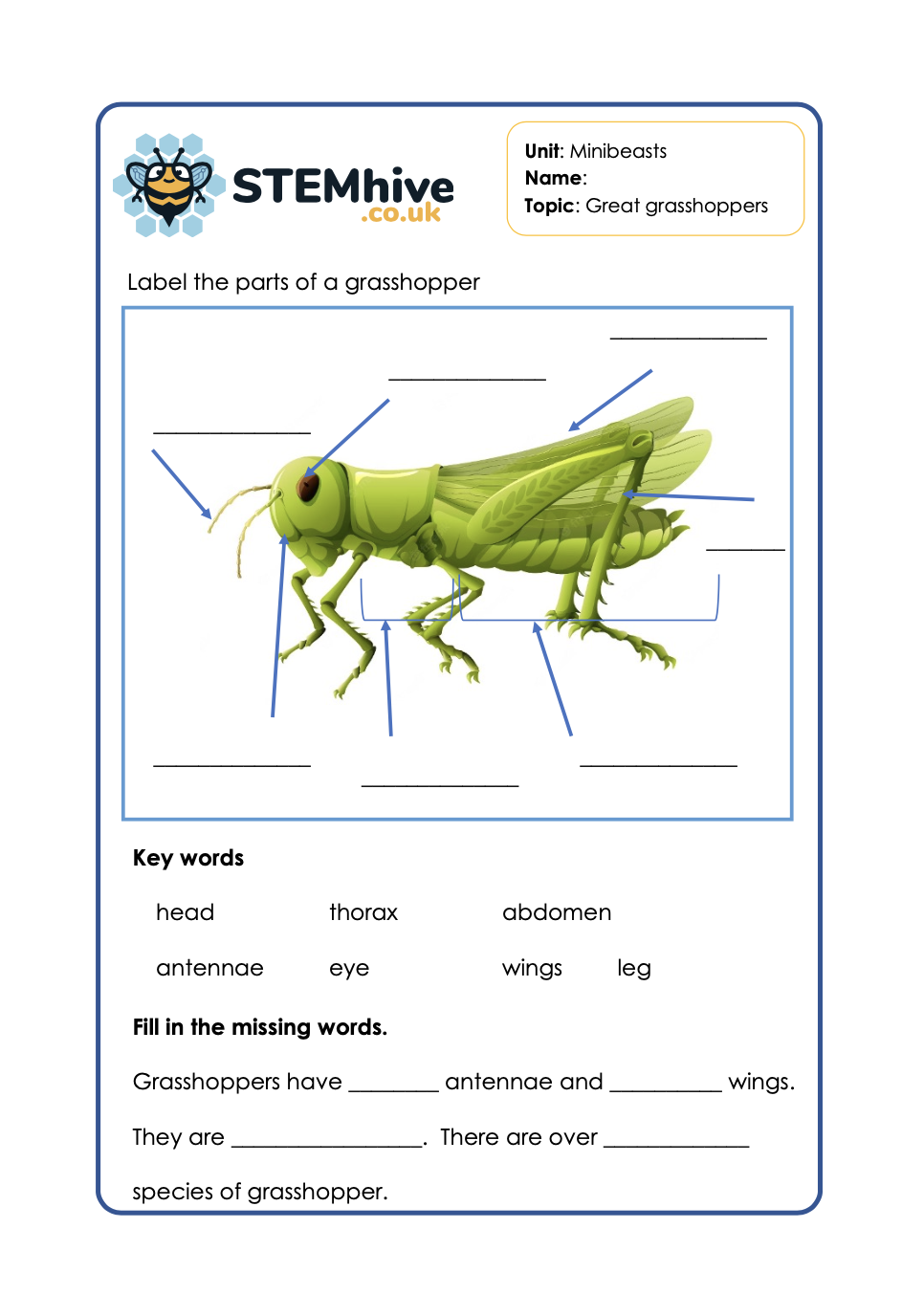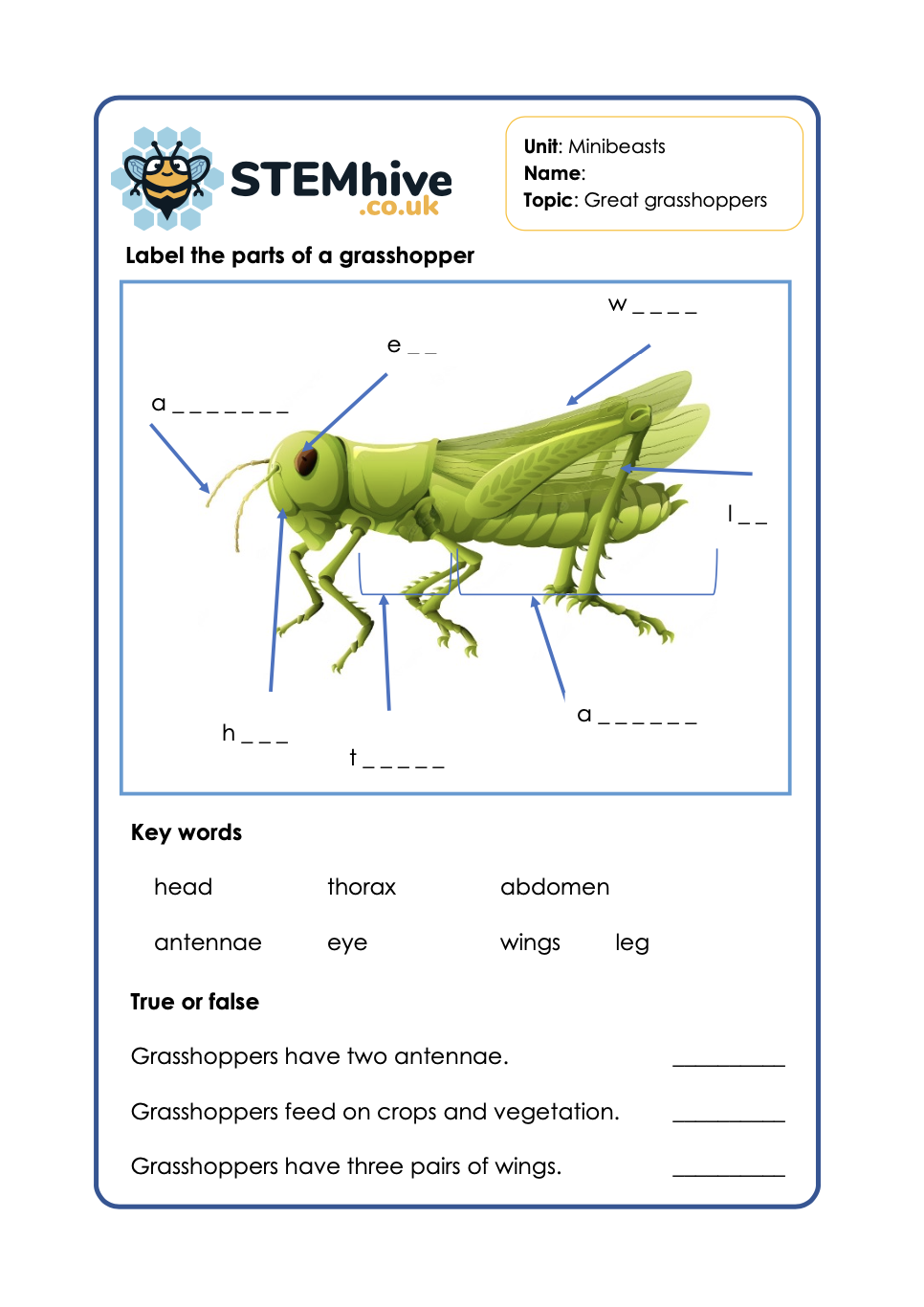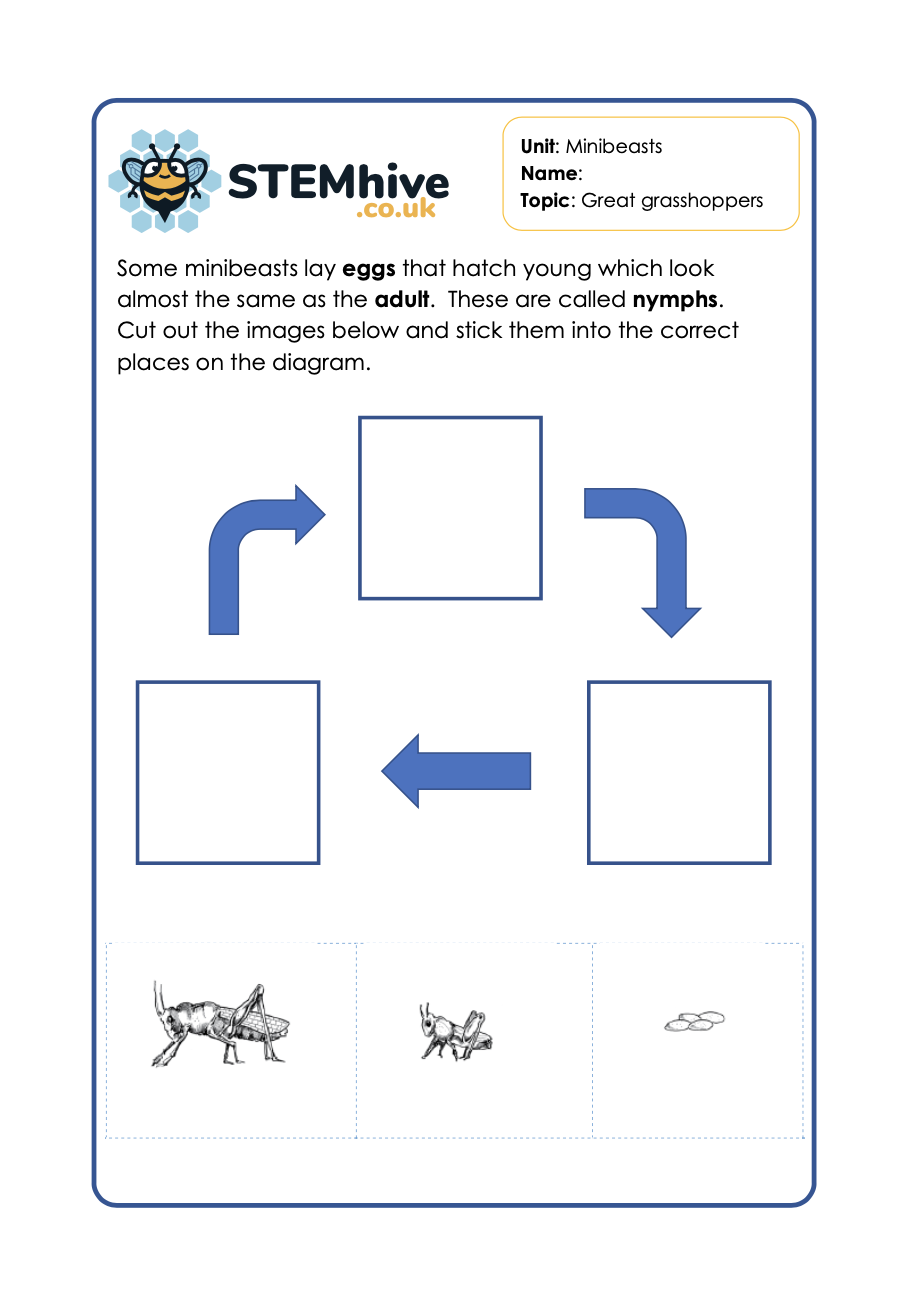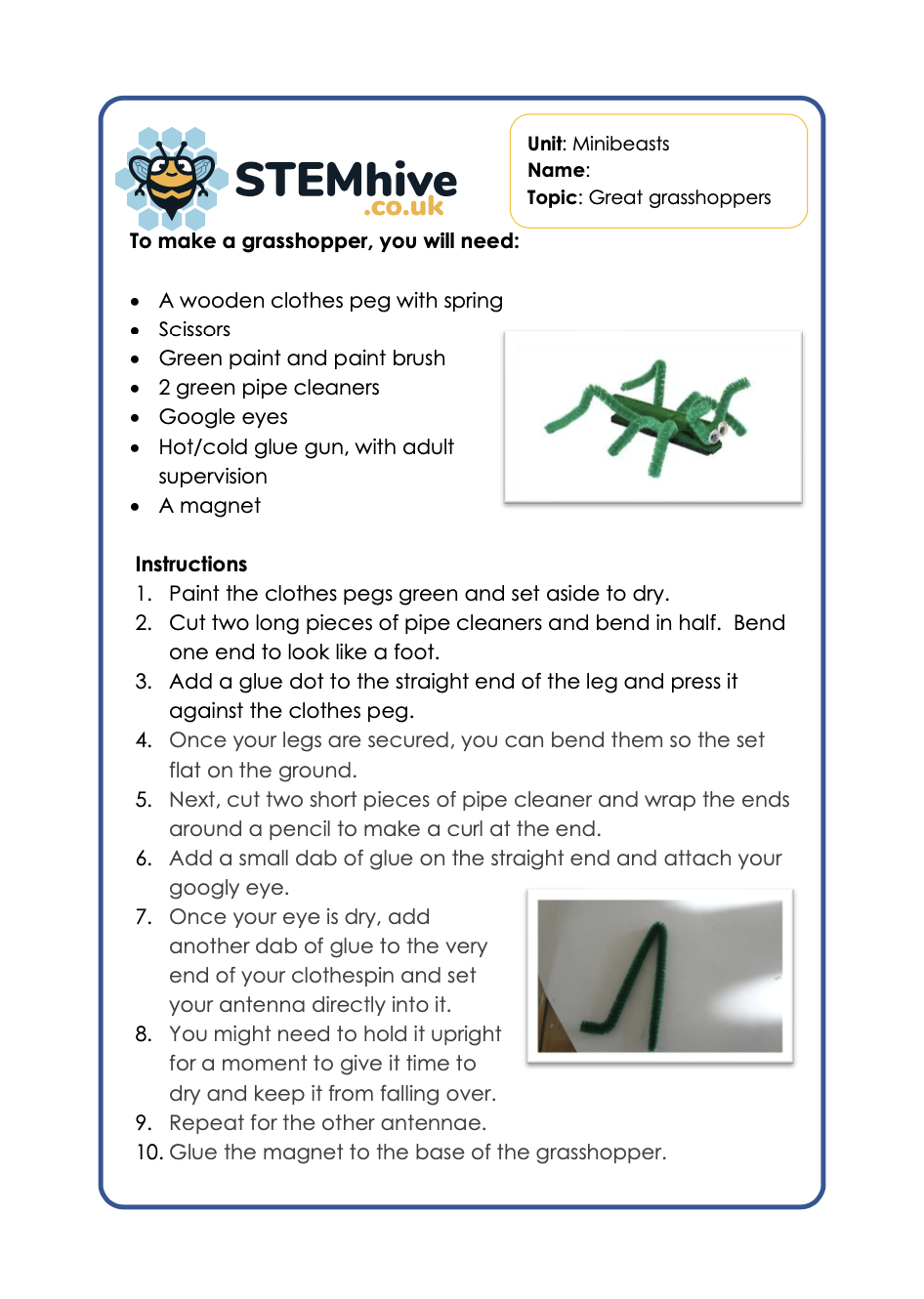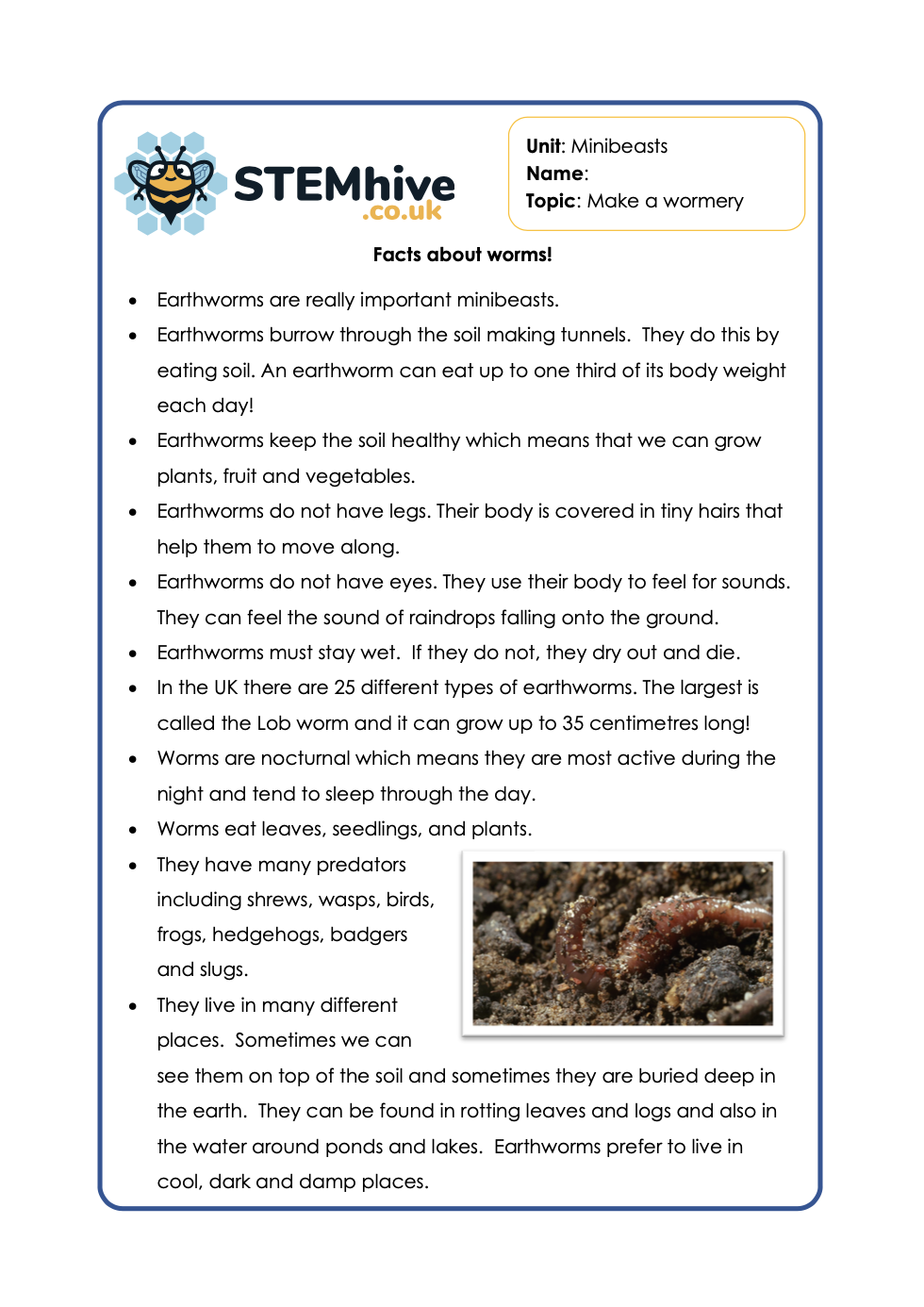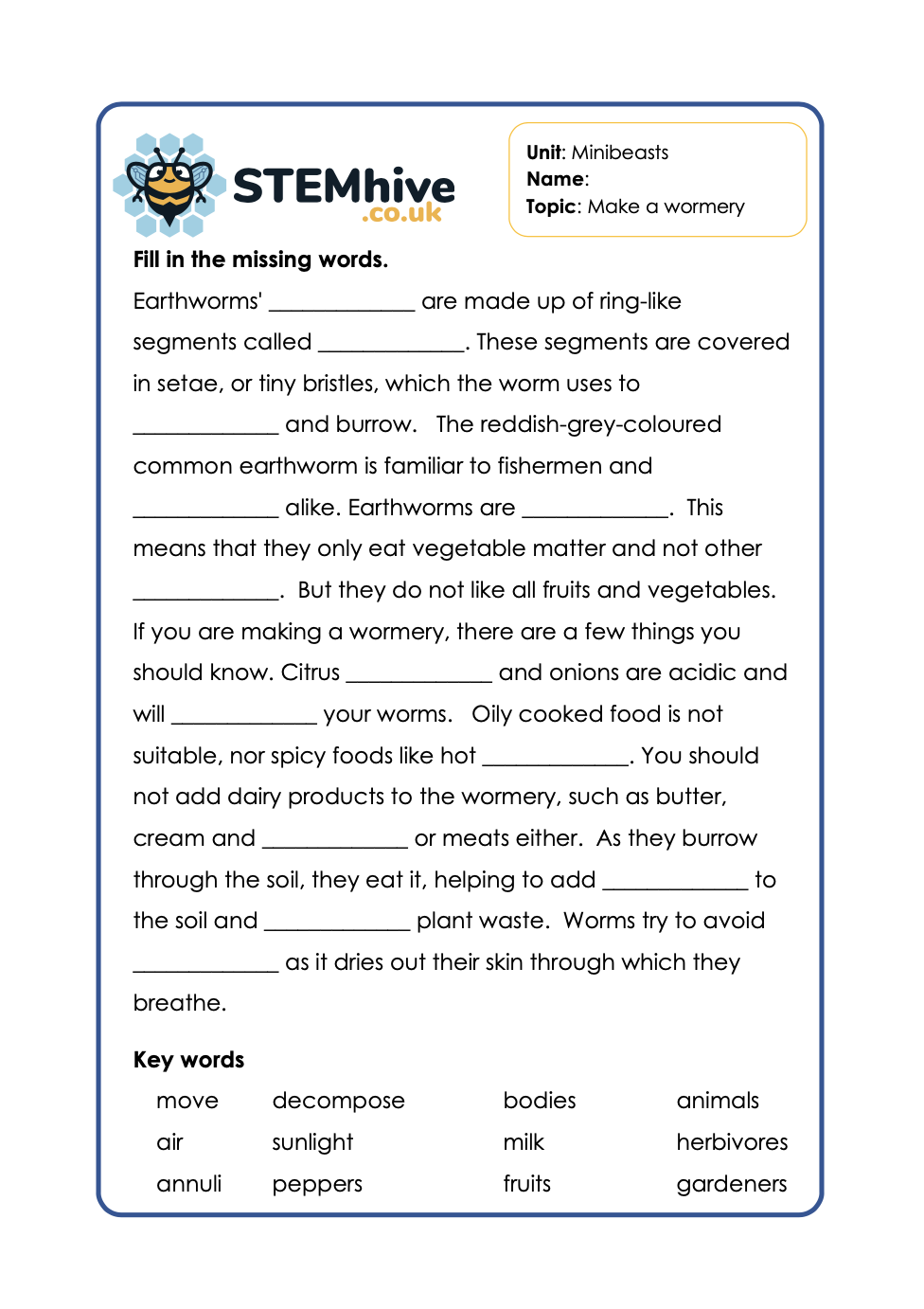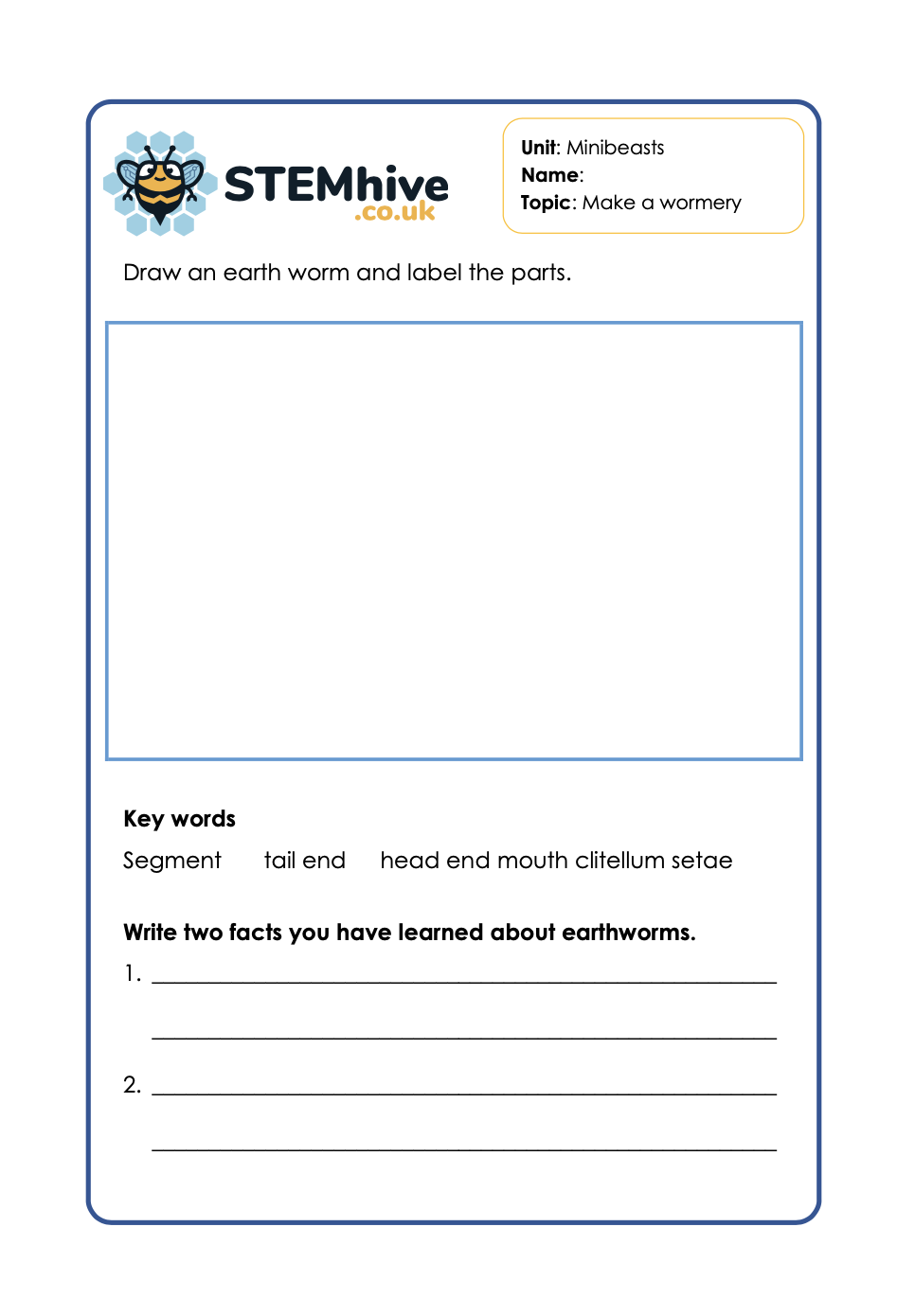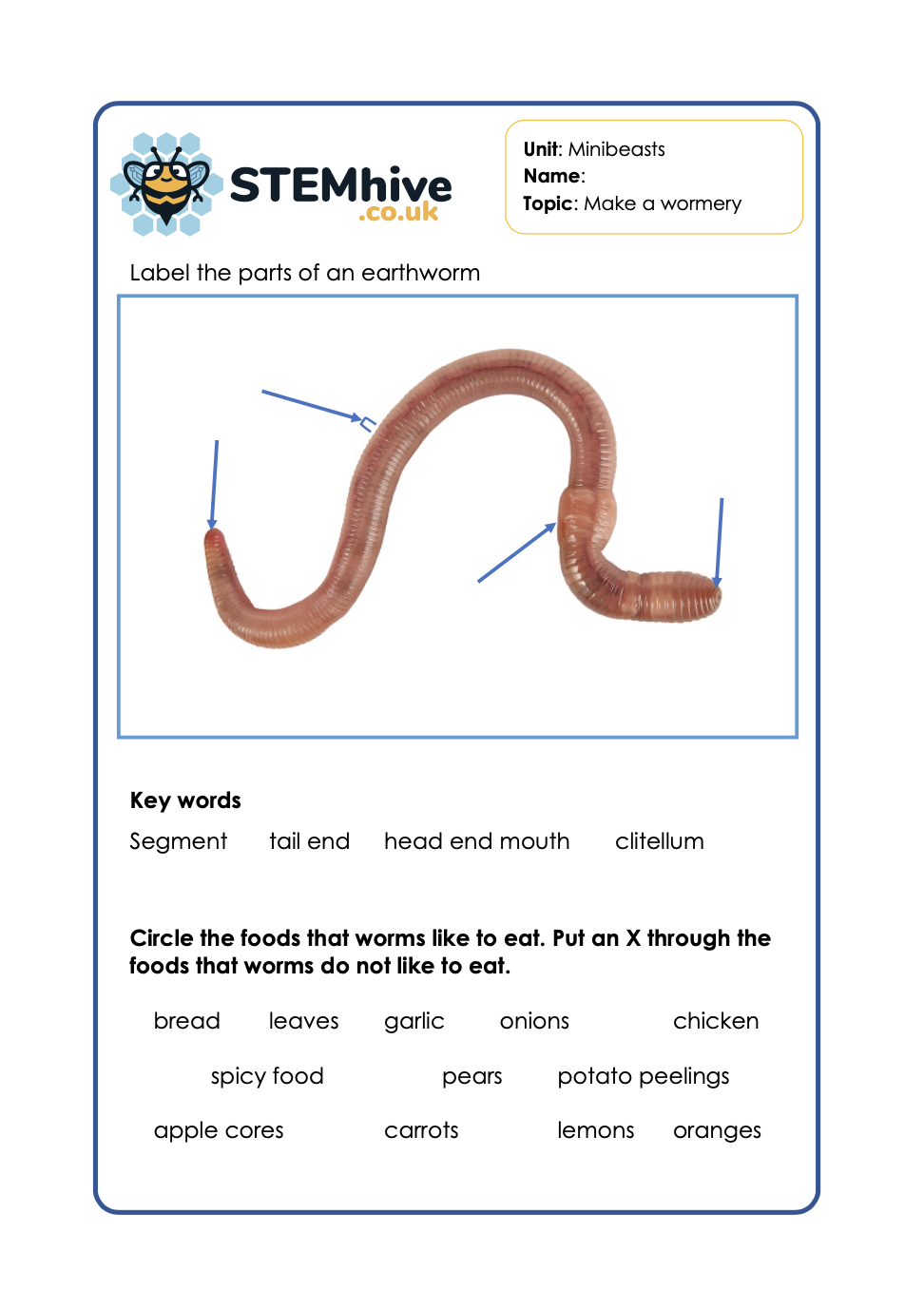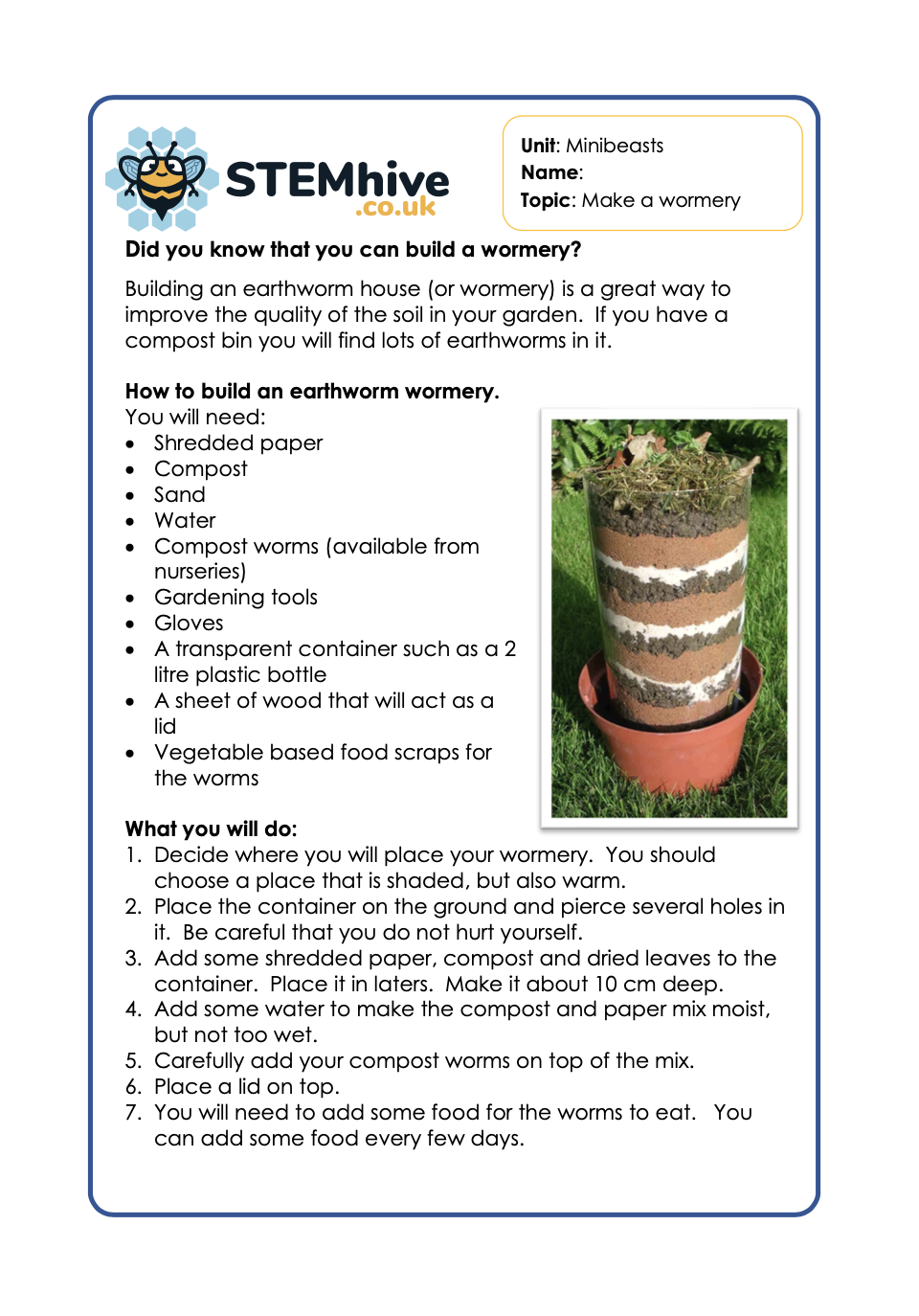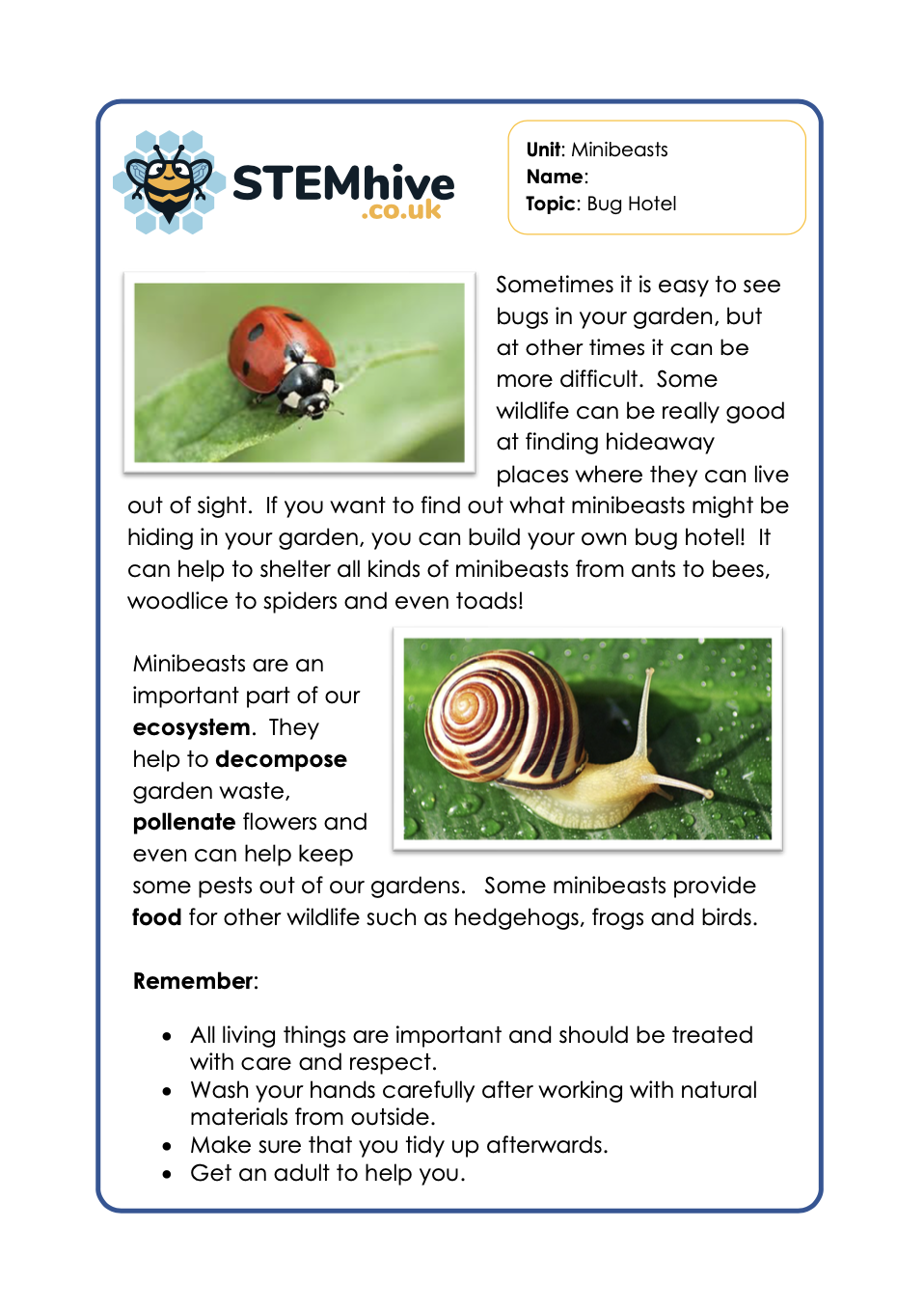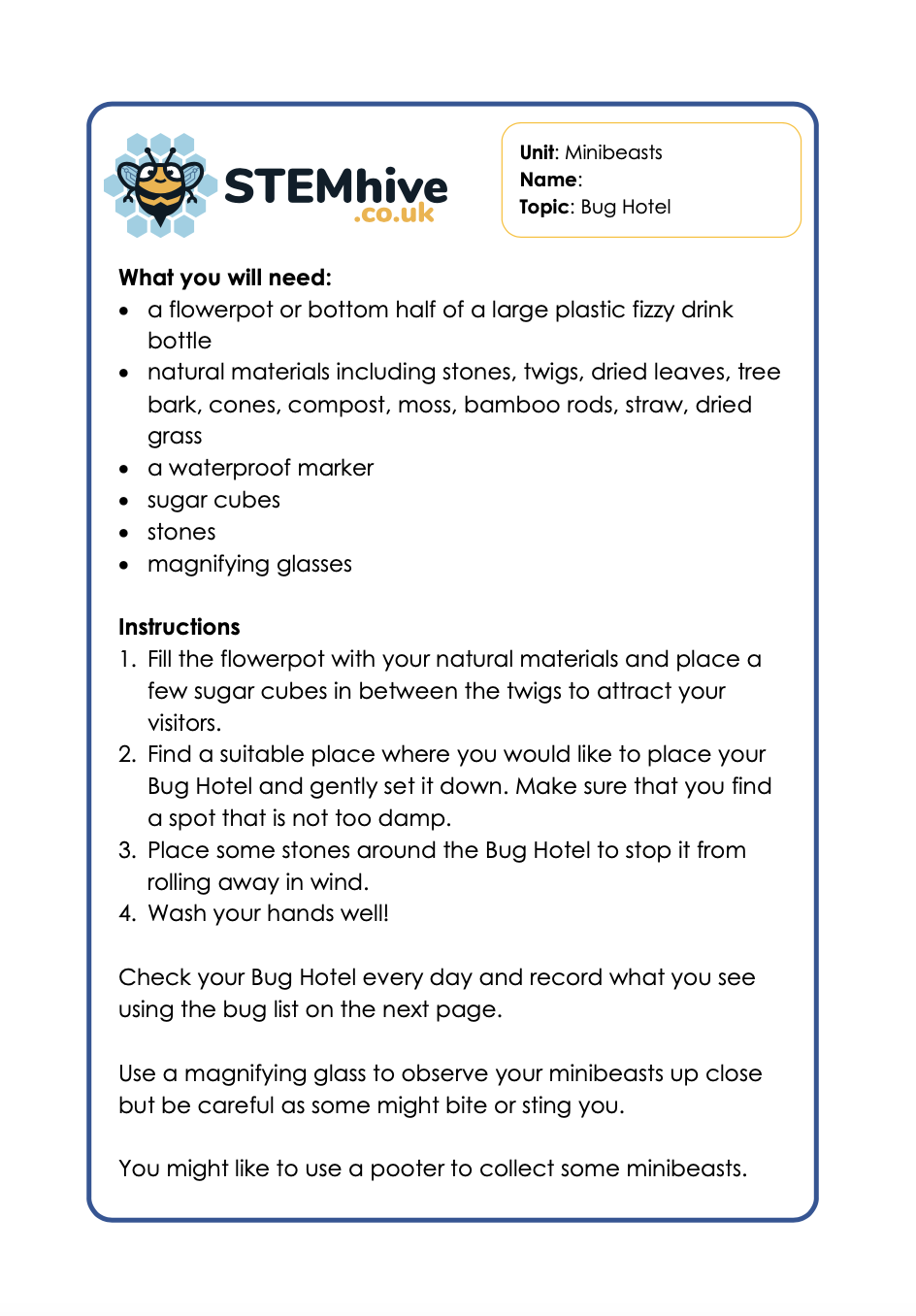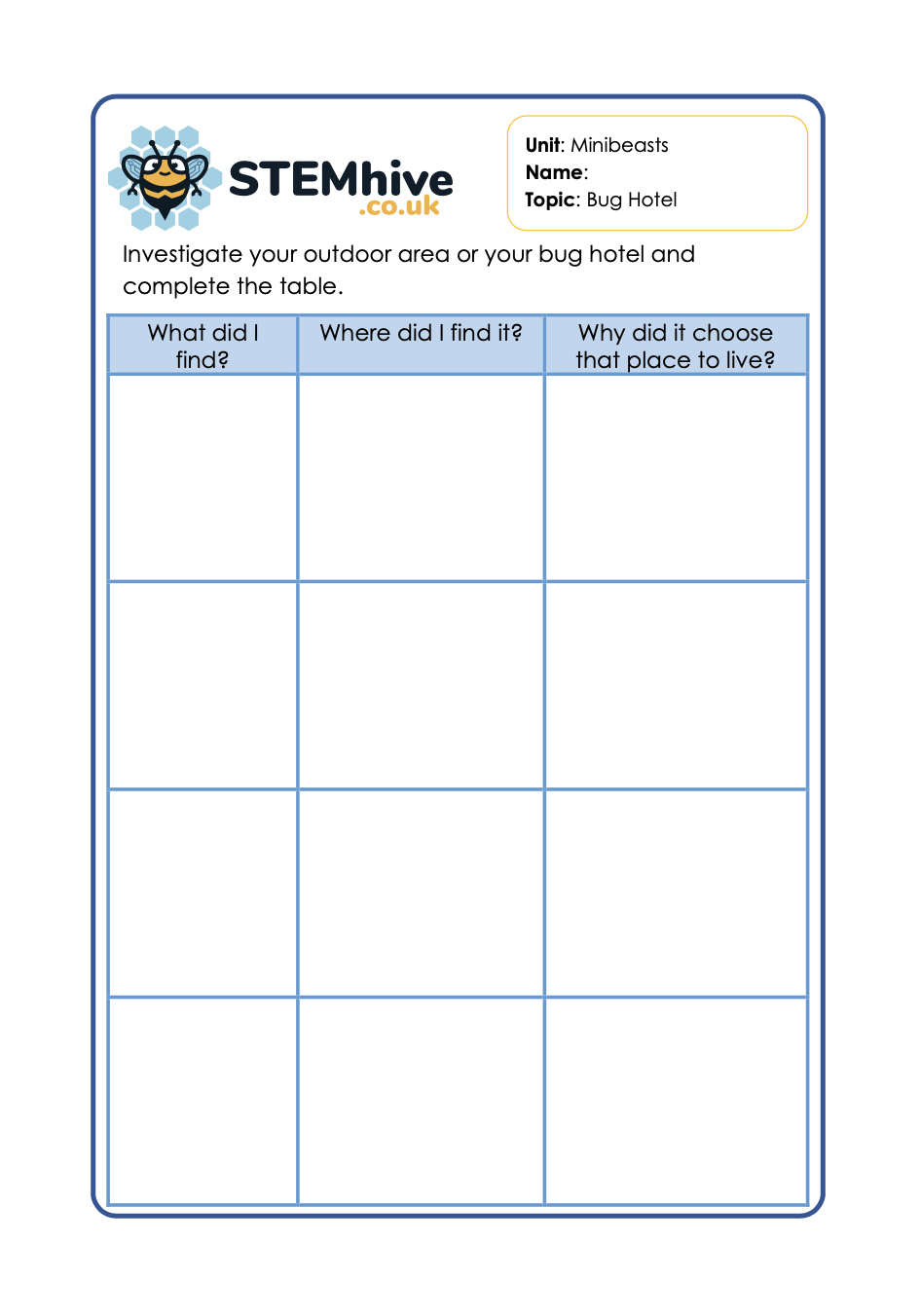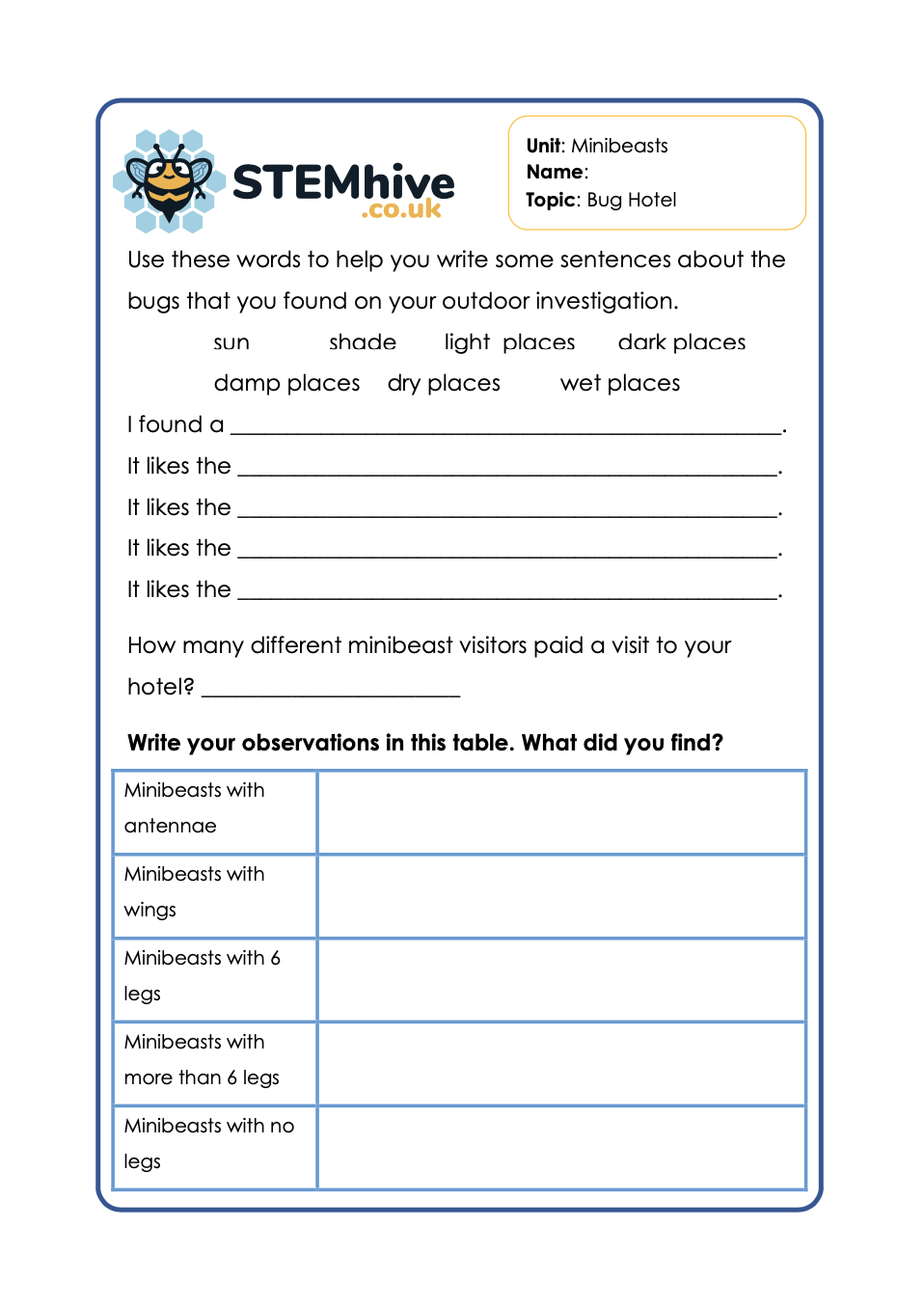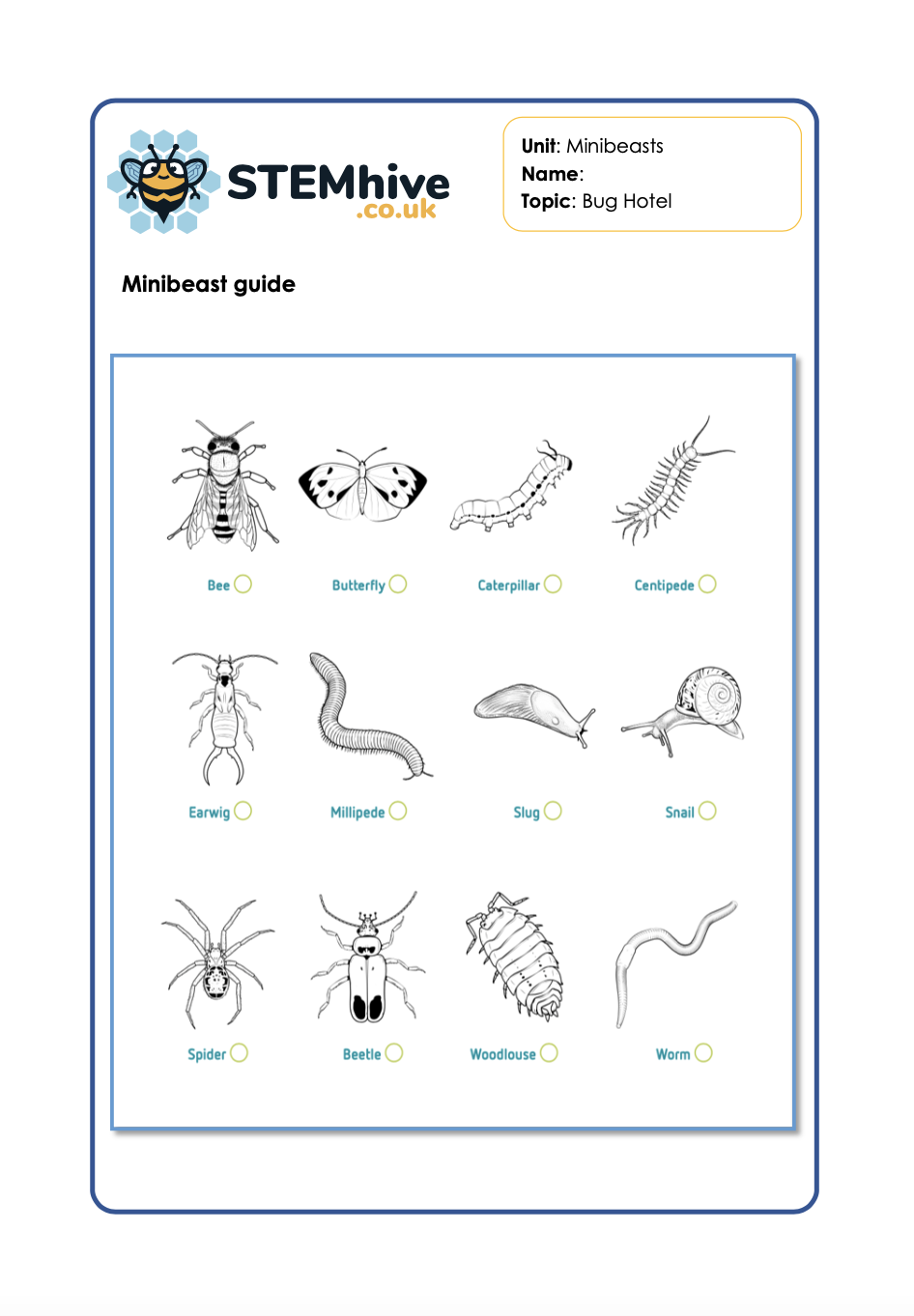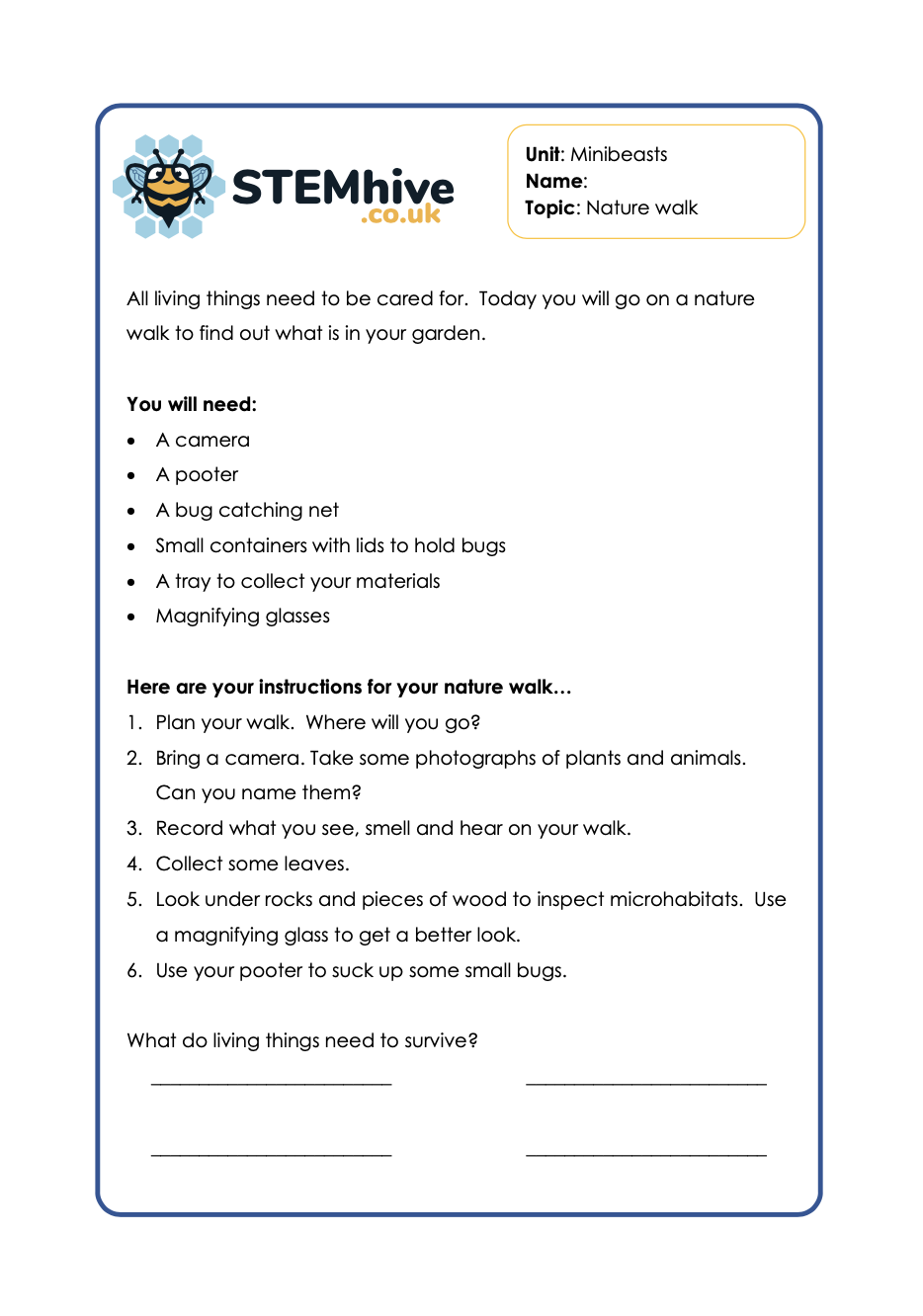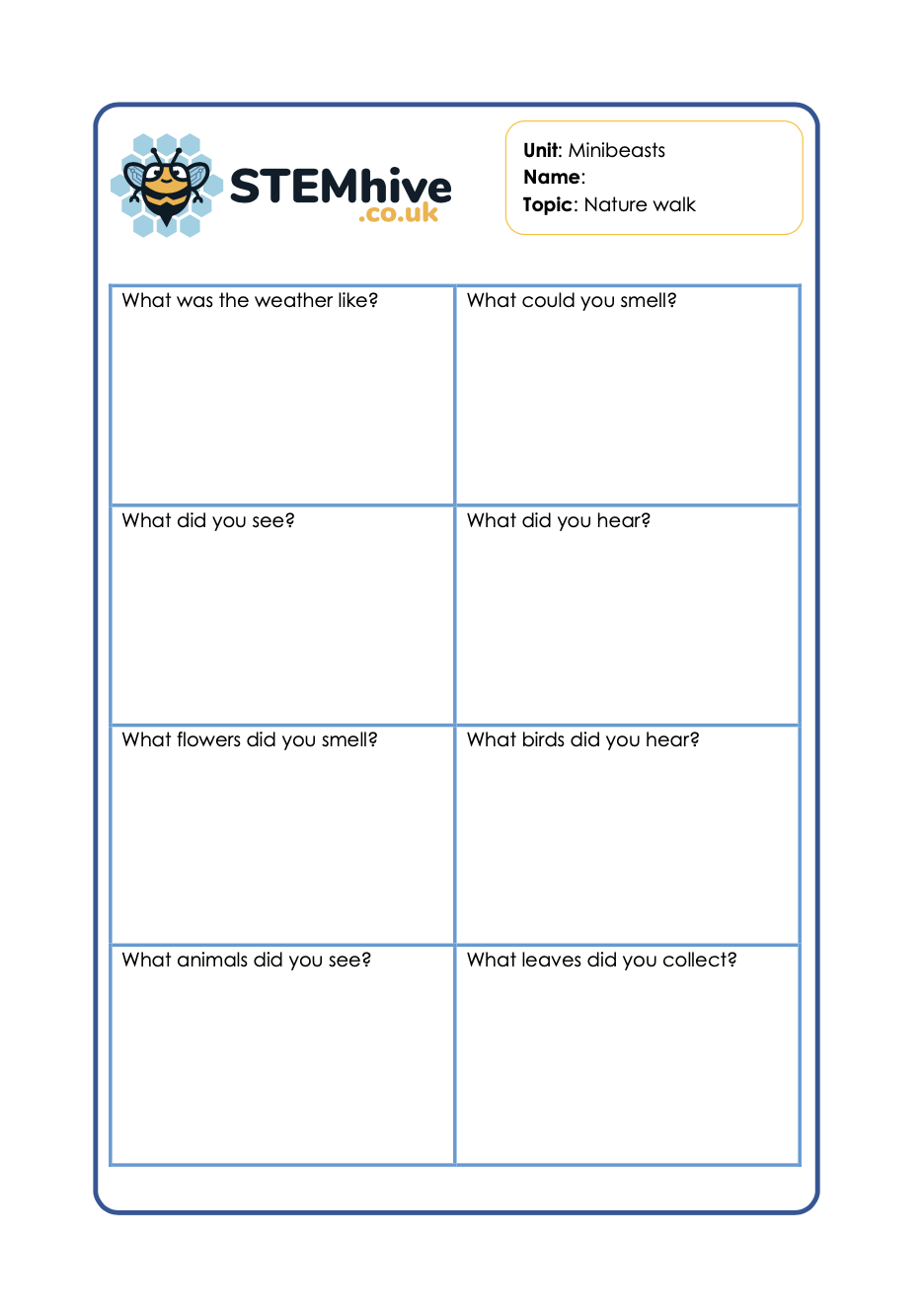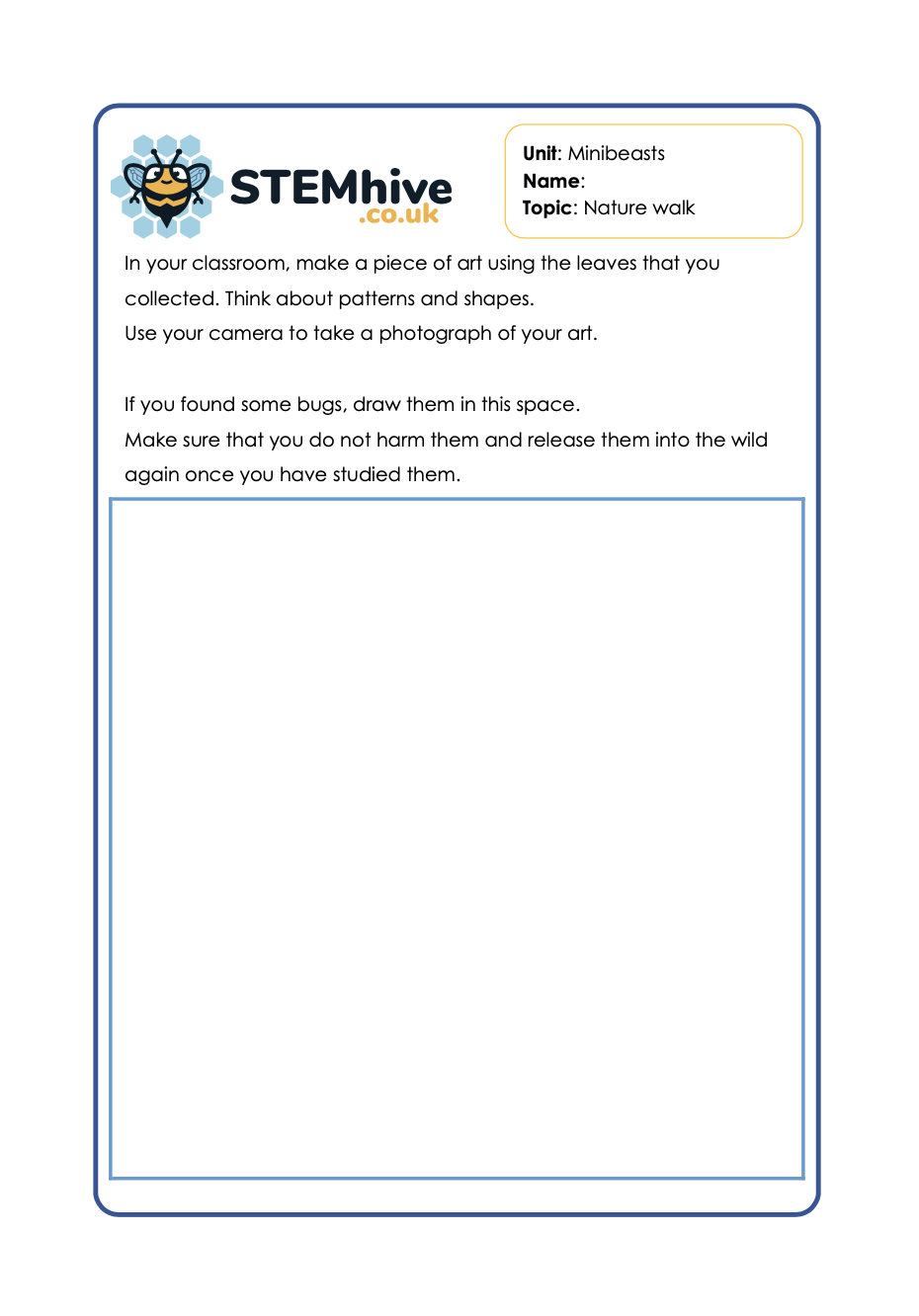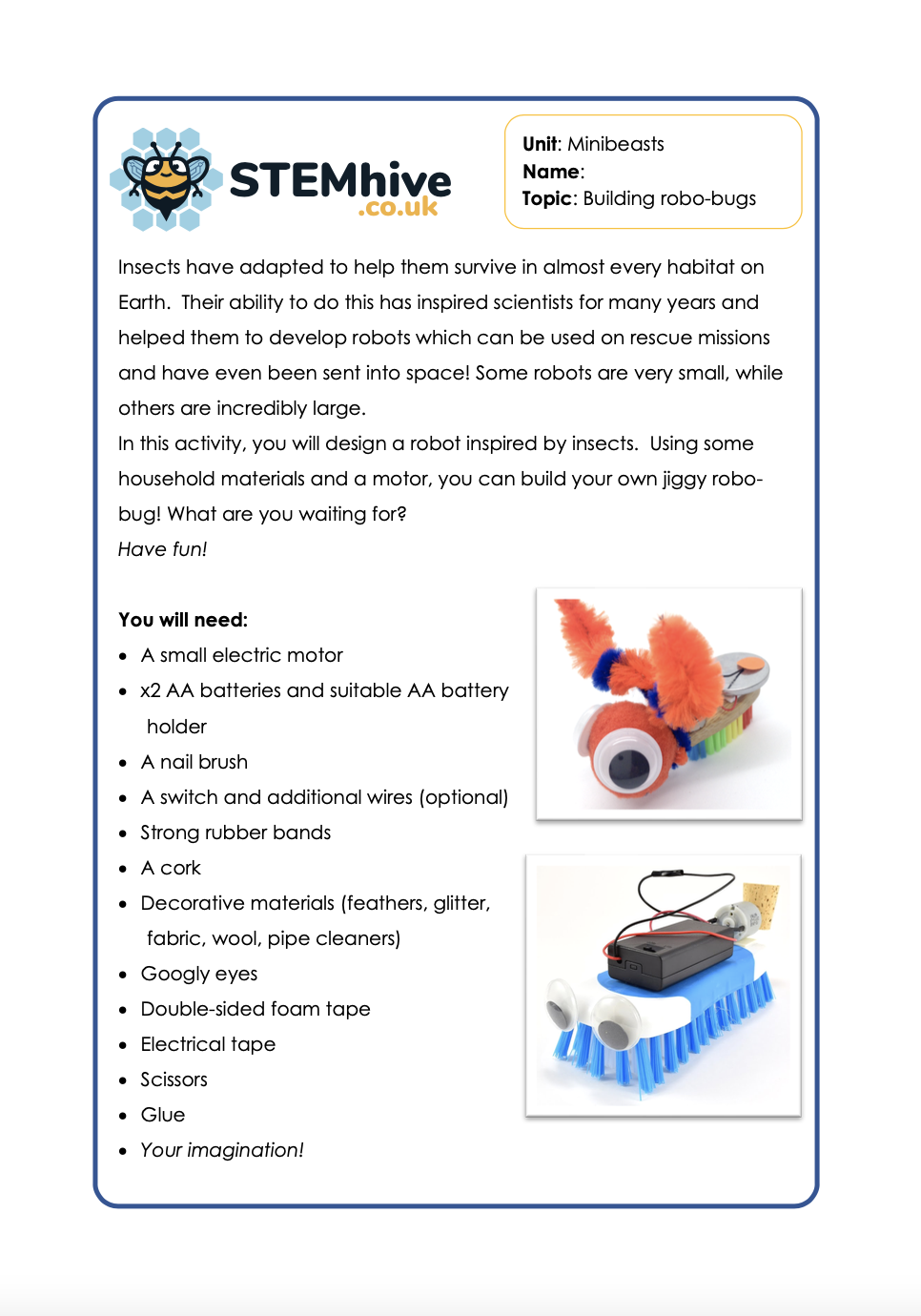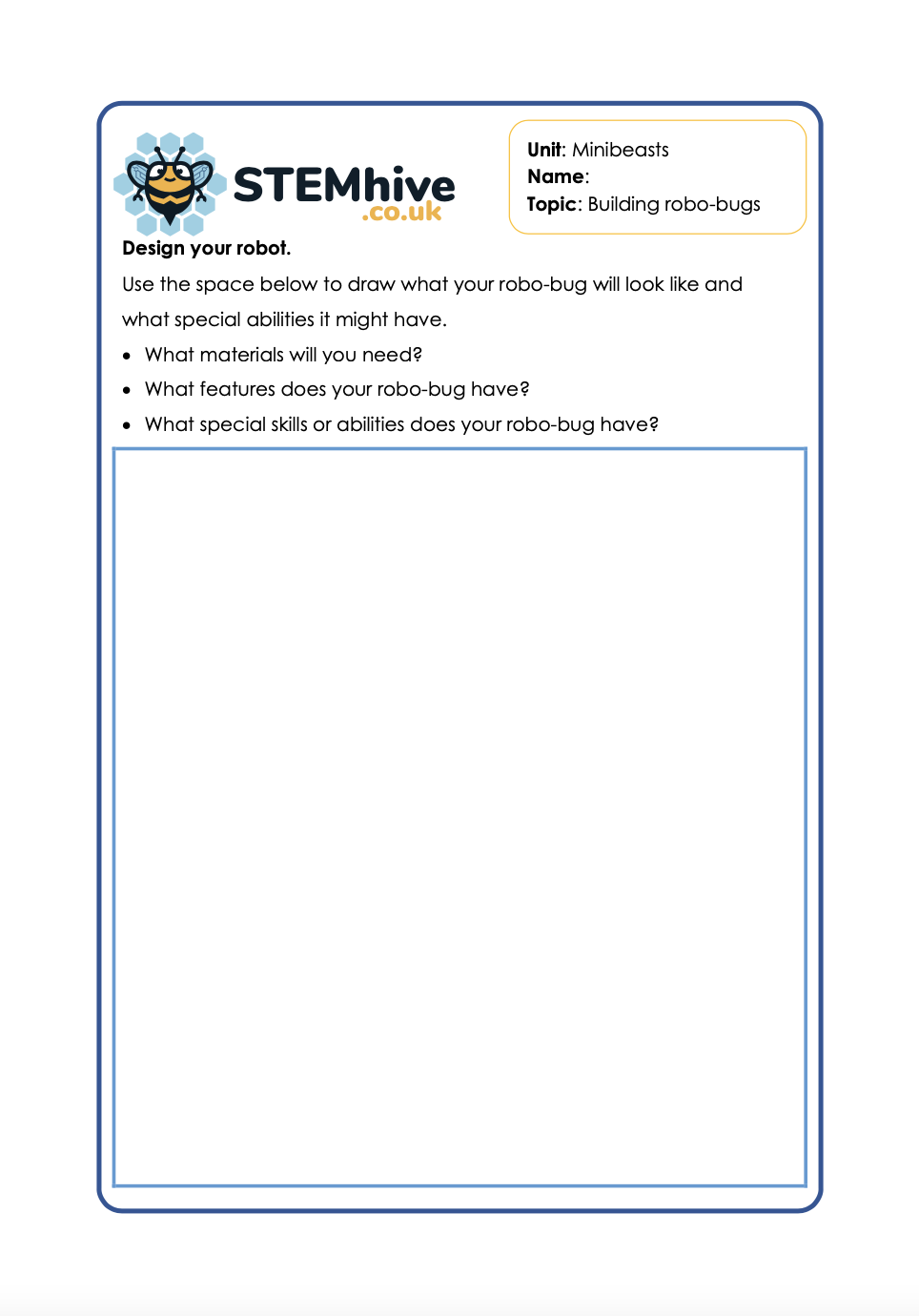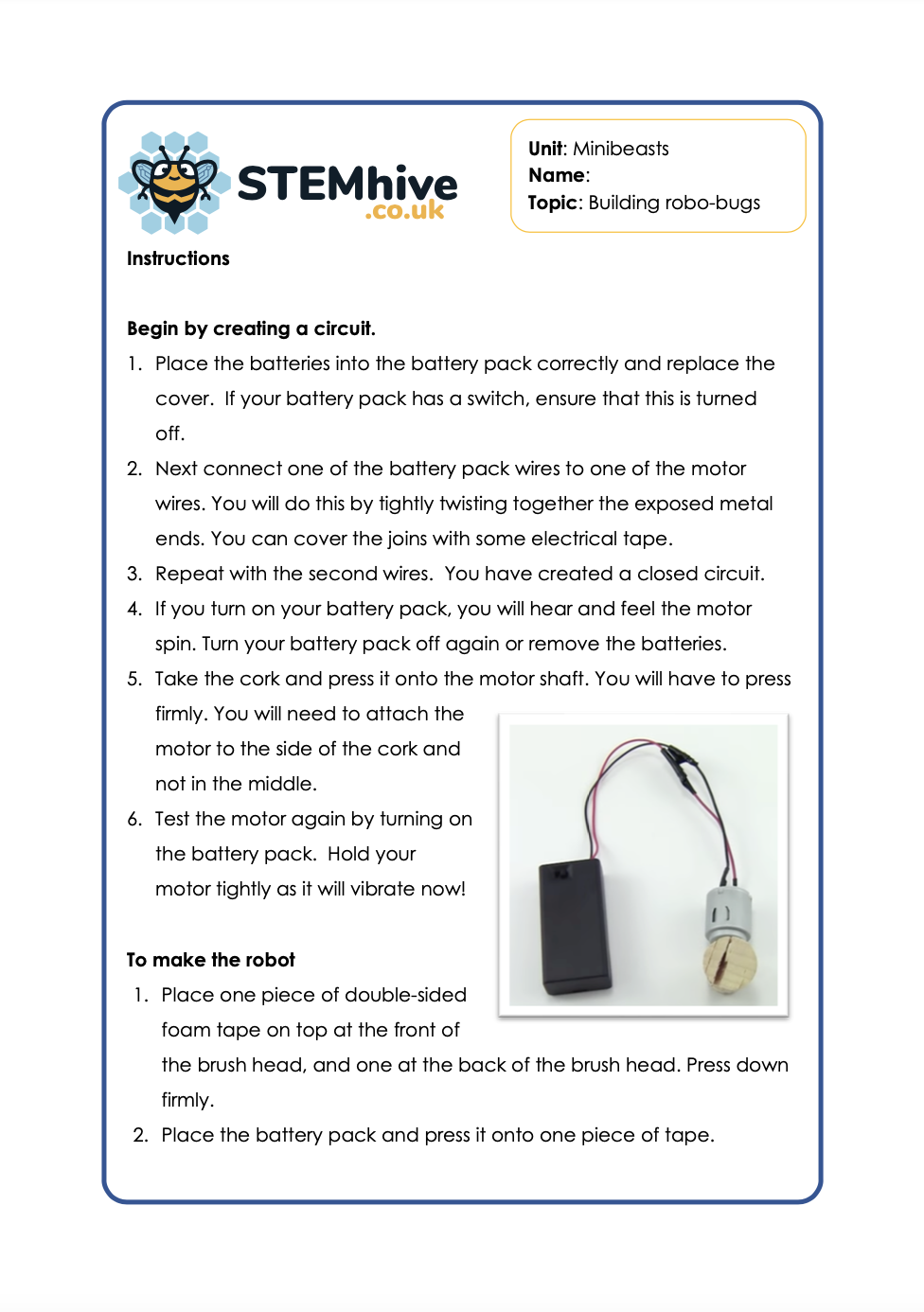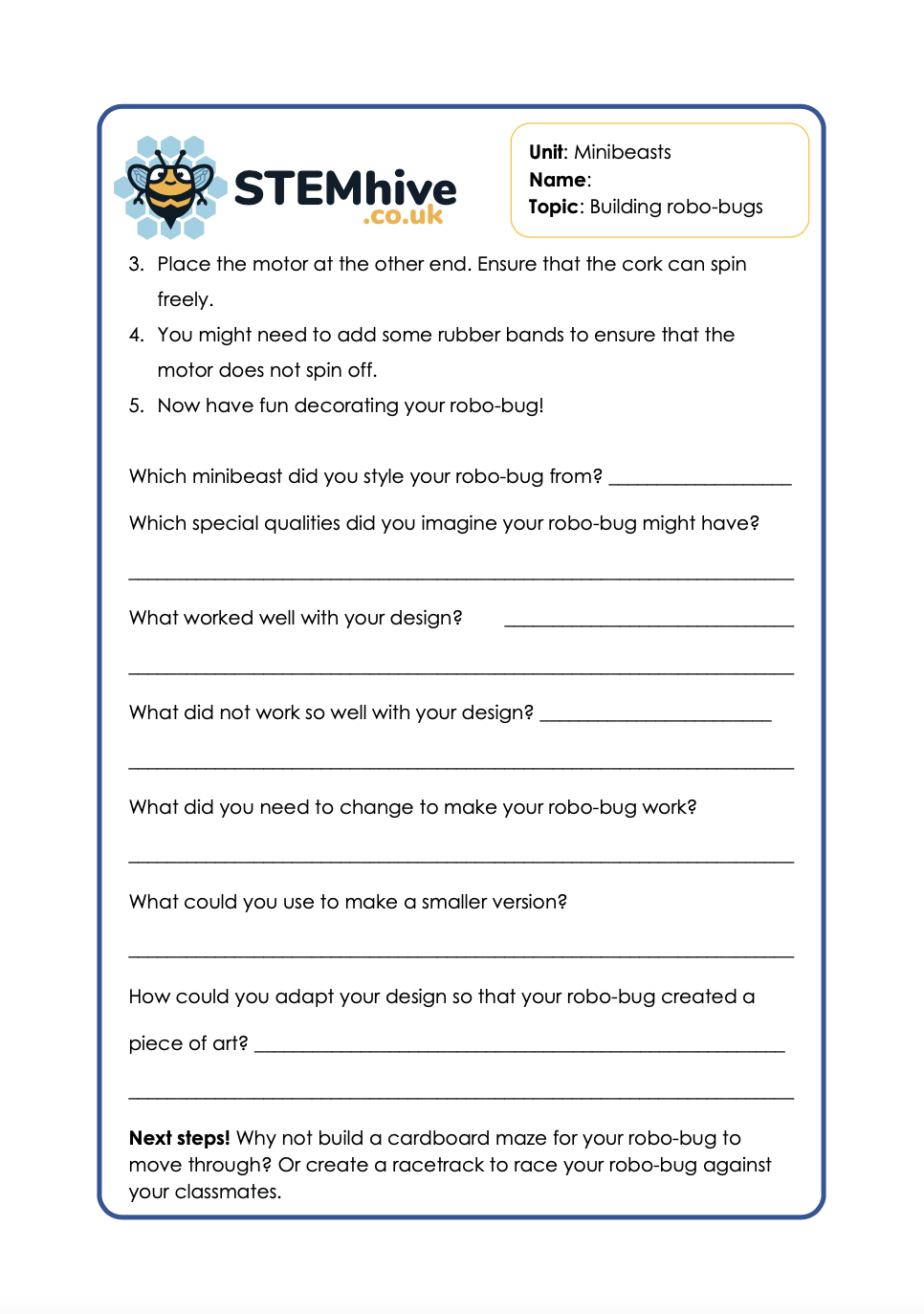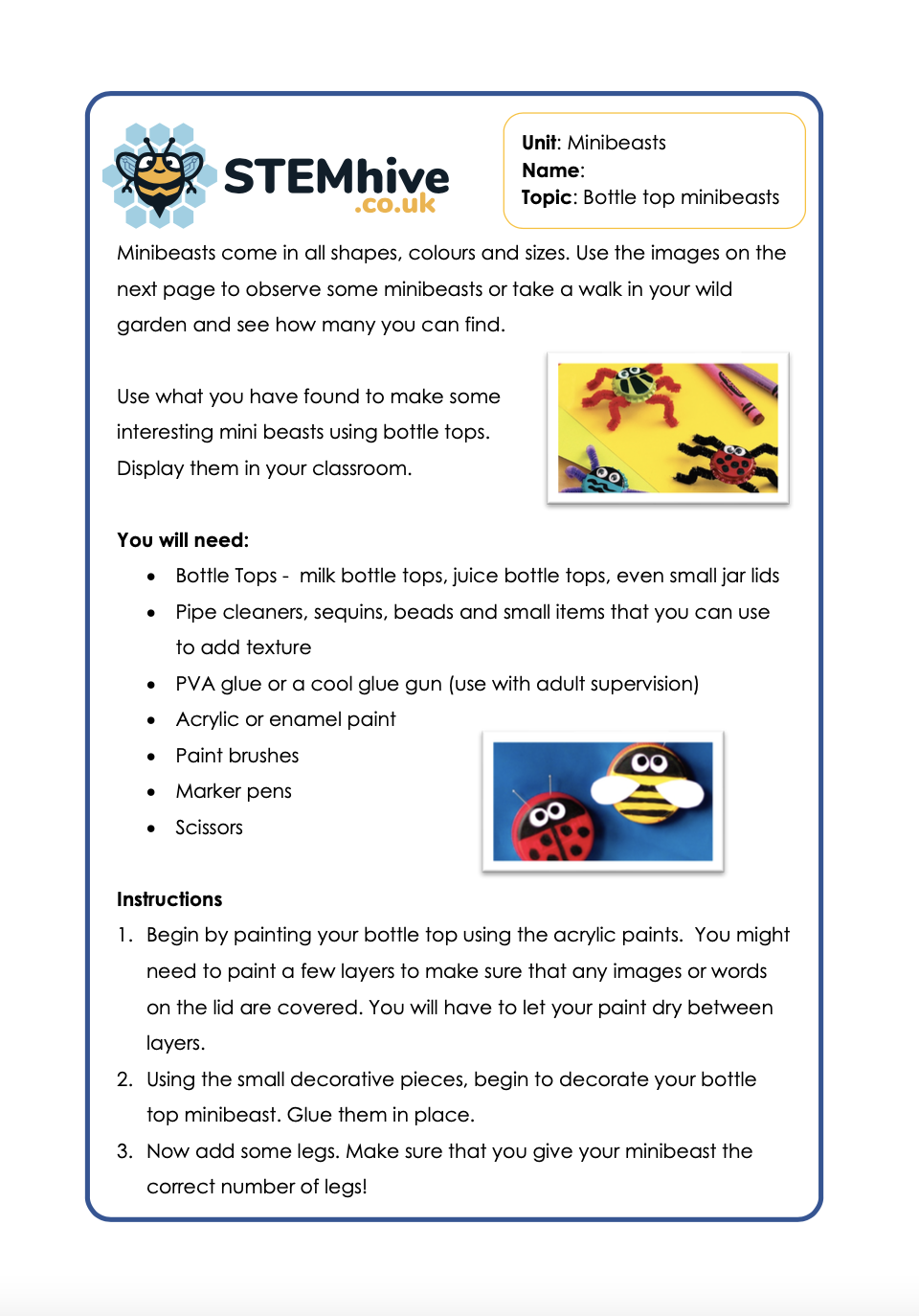Minibeasts
Main Focus: Arachnids
Arachnids are a group of vertebrae and include spiders, scorpions, mites and ticks. There are about 60,000 species of arachnids.
Arachnids have eight legs and they also have an extra pair of either pincers or fangs. They do not have wings or antennae. They do have a hard exoskeleton.
In this resource, your KS2 class will complete a dissolving experiment, label a spider and complete the paragraphs by adding in the key information.
Main Focus: Fly Trap
How to make a home-made fly trap.
You will need:
- 3 plastic bottles, with the top part cut off the plastic bottle.
- 3 different types of liquids: water, a sugary liquid mix such as 2 tablespoons of honey in water, a pure fruit juice
- Labels
Instructions
- Pour the first liquid into the bottom of the first bottle.
- Remove the cap from the top of the bottle, turn the top of the bottle so that the top is pointing downwards and insert it into the bottom of the bottle.
- Repeat for the next two liquids.
- Label each bottle clearly.
- Place your fly traps in an area where you see a lot of flies for a few days. Check on it each day to see how many flies you have trapped.
Main Focus: Flies
In this mini beasts topic resource for Year 3 and Year 4, your class will learn key information about flies, their life cycle and then they will label a diagram.
Flies might be a pest to us, but they are an important part of the food chain and are eaten by many animals including birds, frogs, spiders and snakes.
Main Focus: Caterpillars and Butterflies
This is another fantastic mini beasts resource and this time it focuses on caterpillars and butterflies.
Your class will learn key terms linked to the life cycle of a butterfly including: pupa, larvae, chrysalis, metamorphosis and more.
We have including a sequencing activity for the life cycle and an informative ‘fill in the blanks’ activity for your class to complete to see how much information they have retained and understood.
Unlock ResourceMain Focus: Camouflage
Many animals and insects have adapted to protect themselves from predators. We call this camouflage. Other insects like to stand out using bright colours to warn predators that they may taste unpleasant or be poisonous.
This resource explores a range of mini beasts that are coloured as a way to deter or hide from predators.
Main Focus: Investigating Camouflage
Investigating Camouflage
Some animals such as snakes, use patterns to hide. Others, such as stick insects, use their shape to try to stay hidden. There are other ways of camouflaging as well. In this investigation you will explore how to best camouflage a cut out insect.
You will need:
- Insect shapes such as butterflies or moths cut out of brown or grey paper (sugar paper or wrapping paper is fine)
- Crayons, pencils and/or felt tip pens
- Scissors
- Blu-Tac
- Objects to ‘hide’
- A piece of brightly coloured wool or pipe cleaner
- Plastic animals in their natural colours
- A square white sheet of paper (6 cm x 6 cm approx) andsome patterned wrapping paper
- Any other objects (optional)ActivityUse the cut-out paper moths and butterflies to explore camouflage by finding places to hide them around the room.
Main Focus: Grasshoppers
Grasshoppers are unusual
insects who can make
interesting musical sounds by
rubbing their back legs against
their wings. This causes their
wings to vibrate a bit like the way a violinist will move a bow over the strings on a violin to make sounds.
In this resource aimed at Lower Key Stage 2 classes, your class will learn about grasshoppers, their quirks, diet, physical features, habitats and more.
Once you have completed the labelling activity, questions and life cycle, your class will then construct their own grasshopper.
To make a grasshopper, you will need:
- A wooden clothes peg with spring
- Scissors
- Green paint and paint brush
- 2 green pipe cleaners
- Google eyes
- Hot/cold glue gun, with adultsupervision
- A magnet
Main Focus: Earthworms & Creating a Wormery
This is a resource and activity pack linked to earthworms. Your class will learn key facts about worms, their physical features, diet, their predators and much more.
Your KS1 / KS2 class will complete the paragraphs about earthworms by adding in the key vocabulary from the list. They will also label a worm and create a home for worms.
Did you know that you can build a wormery?
Building an earthworm house (or wormery) is a great way to improve the quality of the soil in your garden. If you have a compost bin you will find lots of earthworms in it.
Main Focus: Bug Hotel
Sometimes it is easy to see bugs in your garden, but at other times it can be more difficult. Some wildlife can be really good at finding hideaway places where they can live out of sight. If you want to find out what minibeasts might be hiding in your garden, you can build your own bug hotel!
This Year 2 | Year 3 | Year 4 resource gives your class step by step instructions on how to create their own bug hotel and create an investigation for the mini beasts that will visit.
It also provides information and key terminology, such as: ecosystem, decompose, pollenate and more, for your class to develop their understanding.
Main Focus: Nature Walk
All living things need to be cared for. In this lesson, your class will go on a nature walk to find out what is in the school garden.
You will need:
- A camera
- A pooter
- A bug catching net
- Small containers with lids to hold bugs
- A tray to collect your materials
- Magnifying glassesHere are your instructions for your nature walk…
- Plan your walk. Where will you go?
- Bring a camera. Take some photographs of plants and animals.Can you name them?
- Record what you see, smell and hear on your walk.
- Collect some leaves.
- Look under rocks and pieces of wood to inspect microhabitats. Use a magnifying glass to get a better look.
- Use your pooter to suck up some small bugs.
Main Focus: Robo-bugs
Insects have adapted to help them survive in almost every habitat on Earth. Their ability to do this has inspired scientists for many years and helped them to develop robots which can be used on rescue missions and have even been sent into space! Some robots are very small, while others are incredibly large.
In this activity, your KS2 class will design a robot inspired by insects. Using some household materials and a motor, they can build your own jiggy robo- bug!
Main Focus: Bugs and Bottle Tops
In this STEM activity, your Year 2 / Year 3 / Year 4 class will use their creativity and imagination to design their own mini beast using bottle tops
Minibeasts come in all shapes, colours and sizes. Use the images on the next page to observe some minibeasts or take a walk in your wild garden and see how many you can find.
Use what you have found to make some interesting mini beasts using bottle tops. Display them in your classroom.

